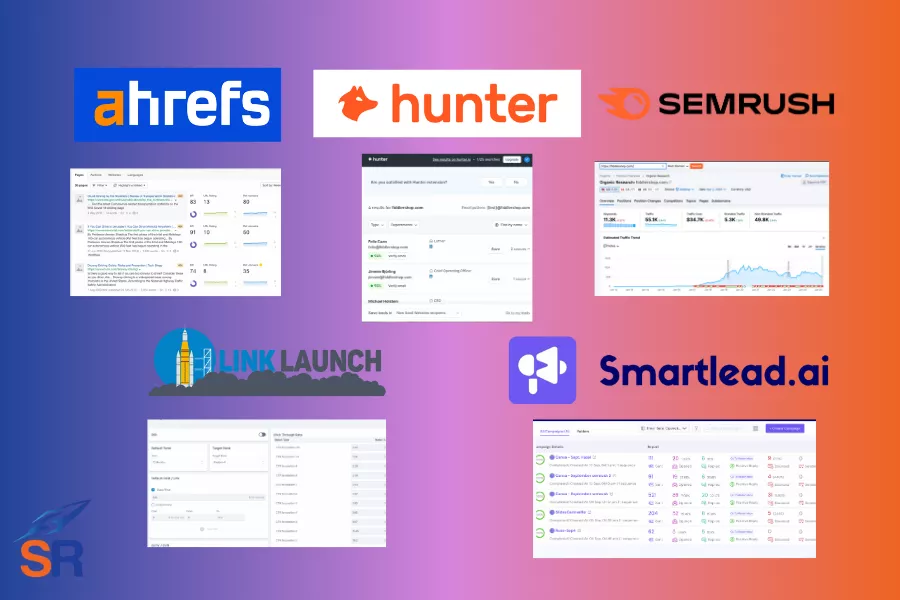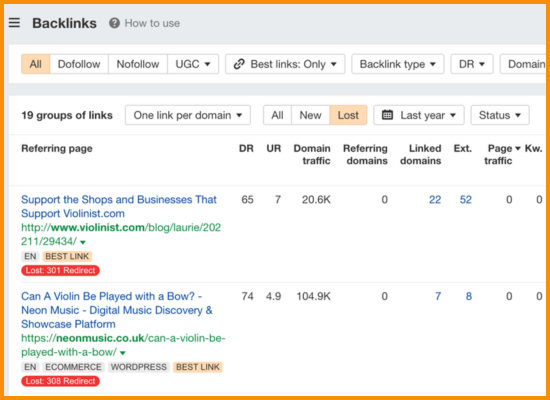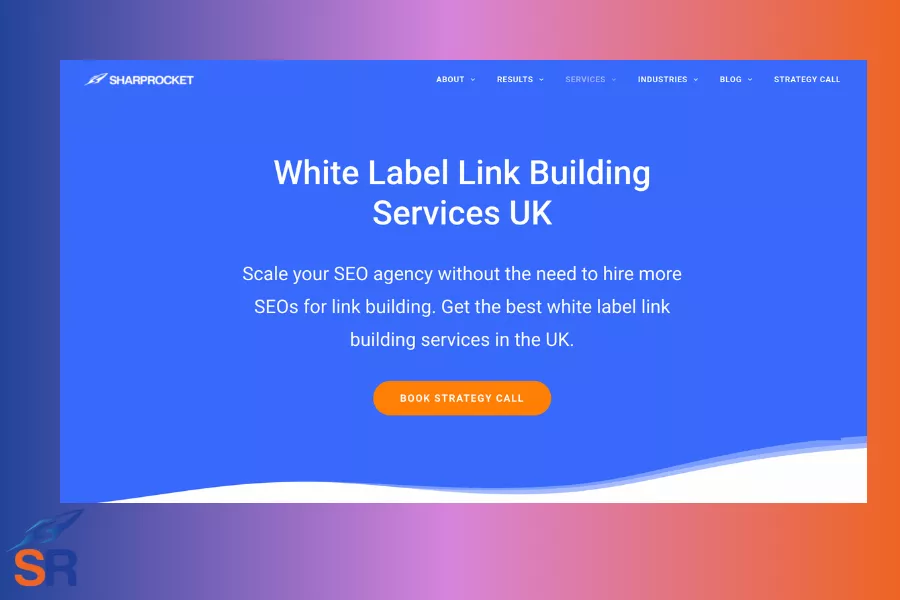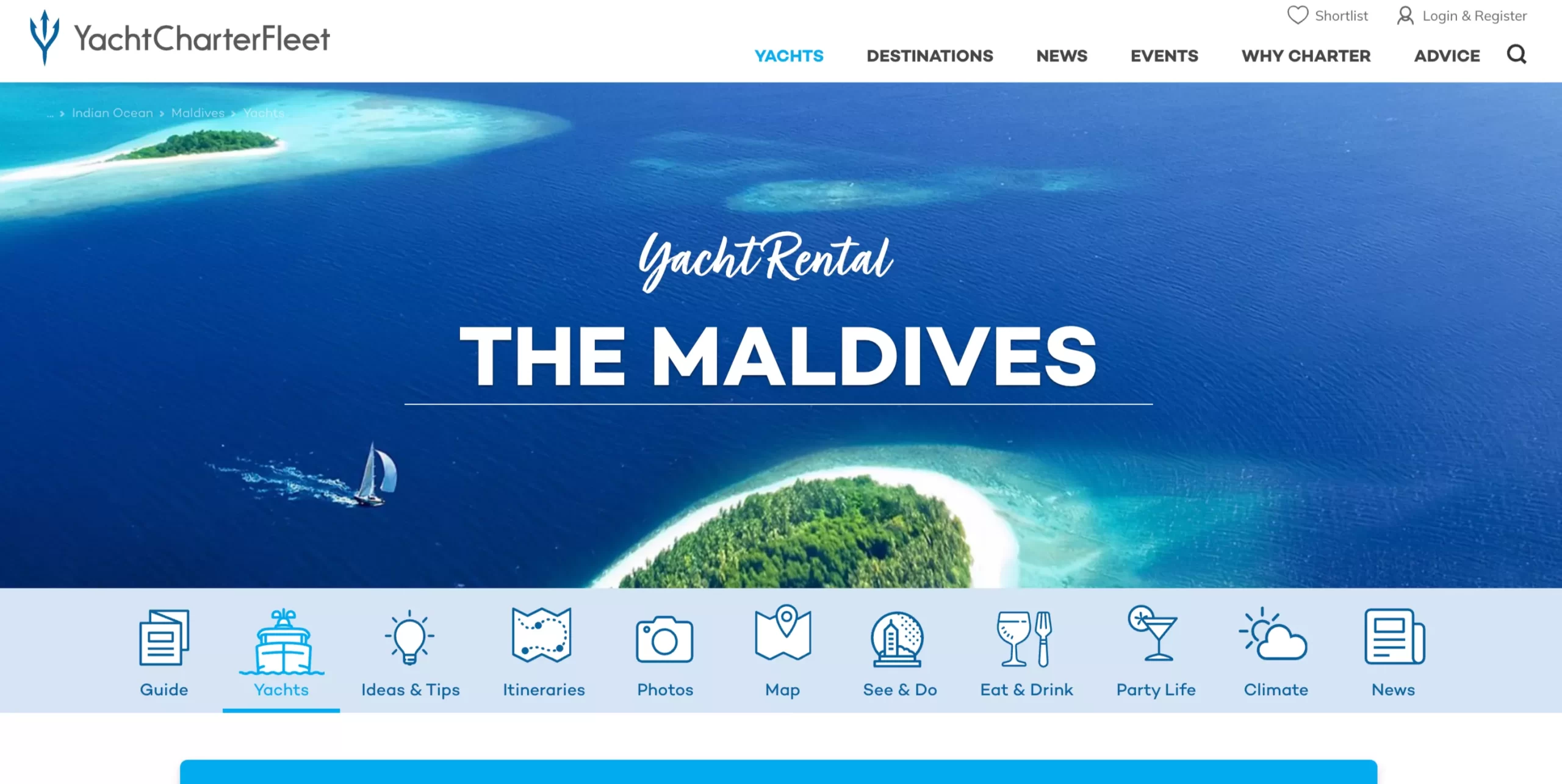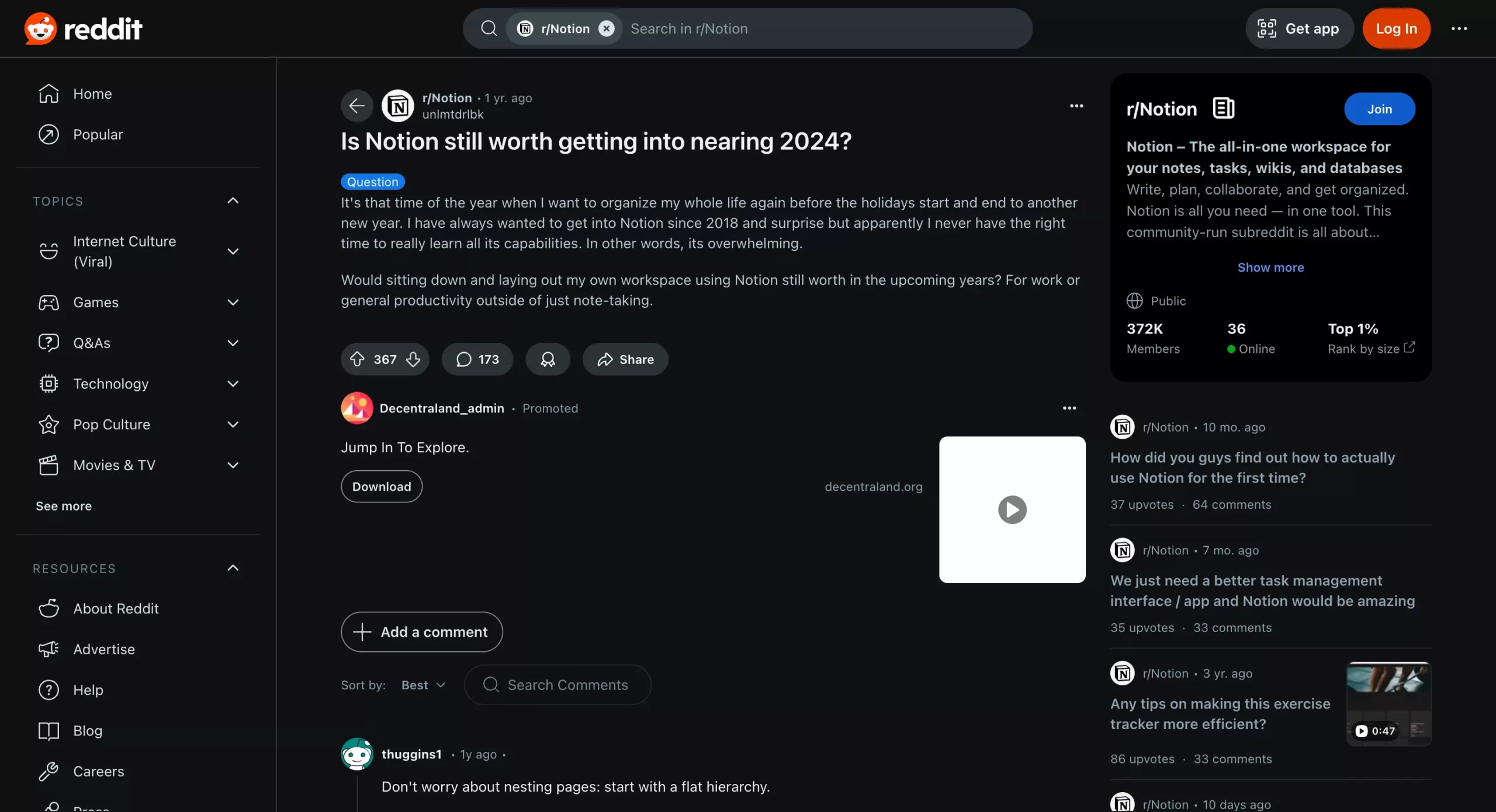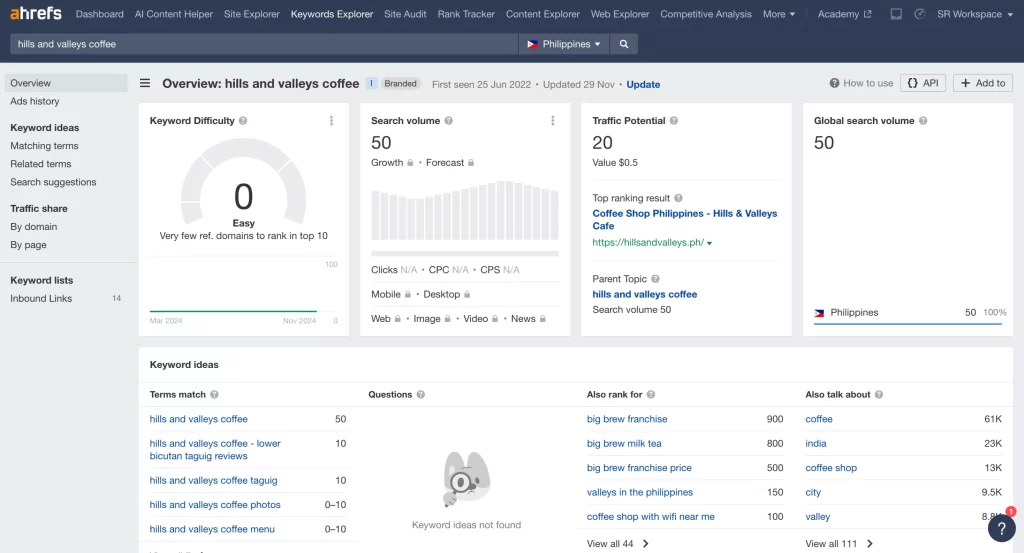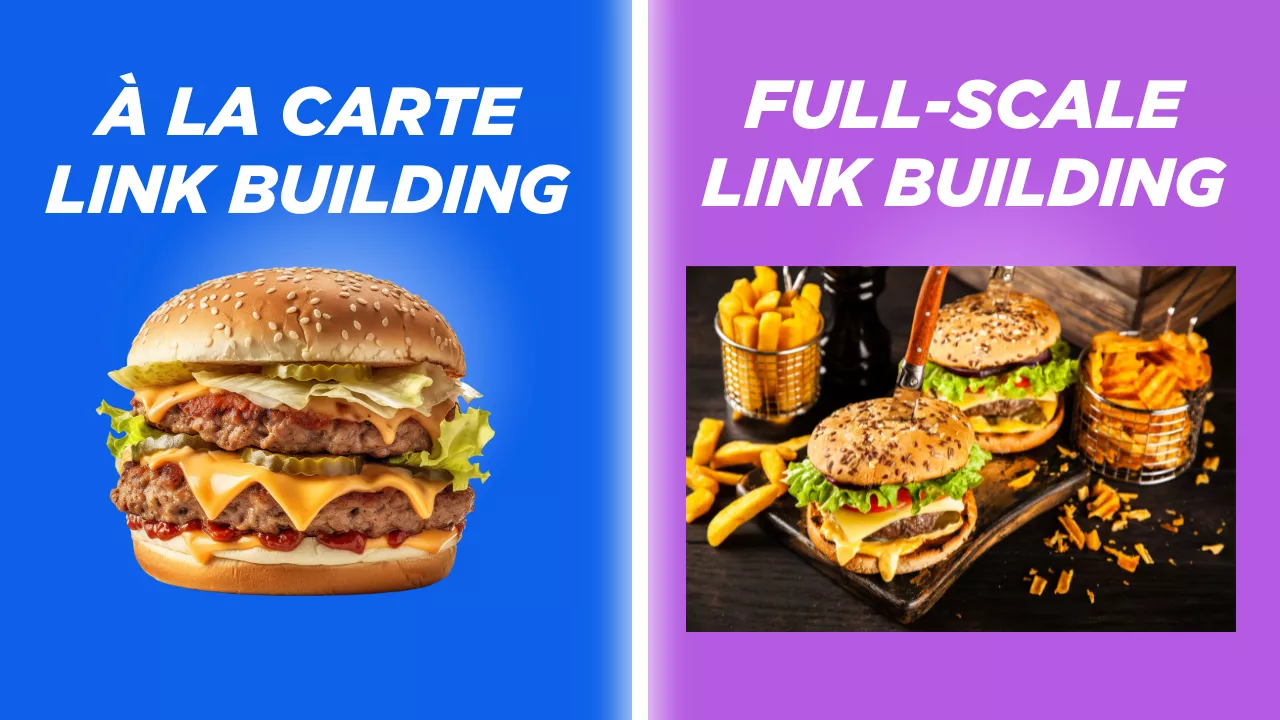Best Link Building Tools For SEO [2026 Honest Review]
As considered to be the UK’s best link building agency, the most common question we’ve been asked is what are the best link building tools for SEO we use to scale our campaigns.
In this 2026 review, we’re sharing our full list.
These are the tools we rely on daily legwork to find quality link prospects, manage outreach, track results, test new link building strategies, and improve results across our clients’ link building campaigns.
For a quick look, here’s our top pick for each key task:
Best Tool for Competitor Link Research, BackLink Analysis, and Link Prospecting: Ahrefs
Ahrefs is our top choice for getting deep insights into your competitors’ backlinks. With their tool features like Site Explorer, Link Intersect, and Content Explorer, you can find highly relevant, authoritative sites linking to others in your industry and quickly build a list of targets. It’s a good starting point for high-impact prospecting and scalable link building campaigns.
Best Tool for Finding Emails: Hunter.io
Once you have a solid list of link targets, Hunter.io helps you find accurate email addresses linked to each domain. Whether you’re searching by domain or by name and company, Hunter makes email discovery quick and reliable. It also verifies email deliverability to reduce bounce rates in email outreach campaigns.
Best Tool for Email Outreach: SmartLead
SmartLead lets you send personalized cold emails at scale. With unlimited inbox rotation and a unified inbox for all replies, it keeps your outreach organized and effective. It’s built for link building teams that care about deliverability, automation, and landing high-quality link placements.
7 Best Link Building Tools For SEO (Our Top Picks)
Below are some of the best link building tools for SEO that we personally hand-picked:
1. Ahrefs (starts at $129/mo)
Ahrefs is our top-picked link building tool as an agency, considering it is highly useful for a wide range of tasks in link building.
It offers one of the industry’s largest and most updated backlink databases. It assists in most of the tedious tasks of prospecting and analyzing the types of backlinks of competitors and other relevant sites.
Let me walk you through some of the tasks we use it for:
Competitor Backlink Research
Feature: Site Explorer
One of the best ways to start your link building campaign is to look at where your competitors have acquired their backlinks, especially those currently ranking for your target keywords. It shows you where these links come from and helps you generate ideas on what specific link building strategies have proven to work and which ones you can replicate for your campaign.
Ahres helps you conduct thorough competitor backlink research. The Site Explorer feature shows you all the backlinks pointing to any domain, URL, or subdomain. Whether you want to reverse the entire domain’s links data or a specific page/content, you’ll have it assembled with Site Explorer.
The best part of Ahrefs is its ability to filter backlinks based on your desired link metrics. And if you’re a UK newbie link builder, you can choose the “Best Filters” so it would do the filtering for you on websites that are do-follow, in-content, DR30+, 500+ organic traffic, and less than 200 external links on a page – it’s the default setting, but you can customize it to fit your needs.
For any link building campaigns we start, I filter sites based on DR and traffic alone (DR30+ and organic traffic of 500+). With that quick analysis, I can decide if exporting the list, analyzing it further, and reaching out to the same link prospects is worthwhile.
I dig deeper into some links for advanced link building strategies by filtering them based on link type, destination page, or number of referring domains. For instance, if I want to see listicles (for SaaS link building), I’ll filter links from external links (7 to 30).
Another example is filtering sites to homepage links to find branded mentions (with links) or valuable links through digital PR campaigns (which mostly link to brands’ homepages).
Discover Link-Worthy Content Topics
Feature: Content Explorer
Creating linkable assets starts with assessing which topics are link-worthy. This means that when you start publishing and do a little bit of outreach, you’ll have chances of earning backlinks from target publishers.
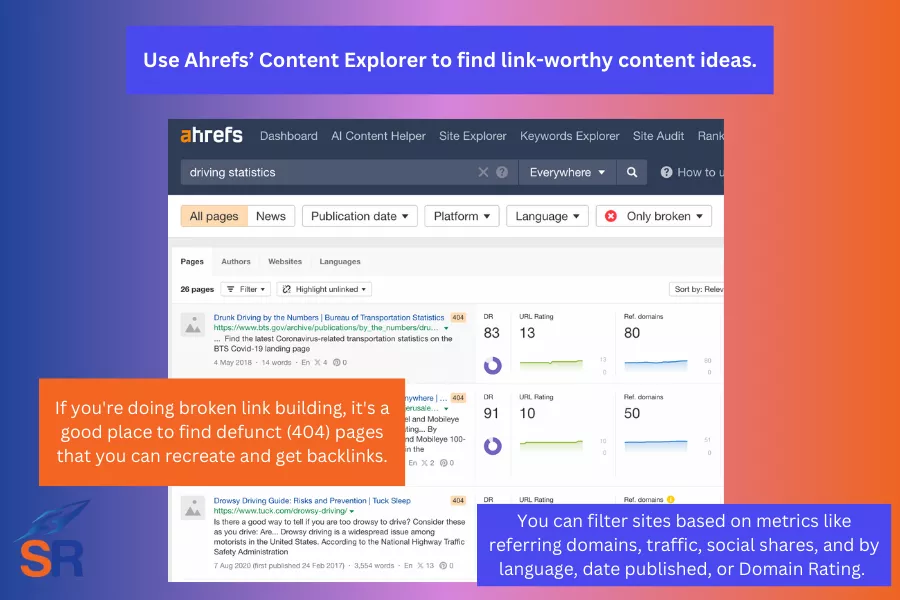
With Ahrefs’ Content Explorer, you can search for any keyword and see pages that earn the most links. You can filter sites based on metrics like referring domains, traffic, social shares, and by language, date published, or Domain Rating.
For example, if you want to search for industry-related topics, you can search for “statistics” and “topic” and filter them by referring to domains (>50), English language, and publication dates from the past year.
If you’re doing broken link building, it’s a good place to find defunct (404) pages that you can recreate and get backlinks by either reaching out to publishers who linked to the dead page or finding new links pages that are topically relevant to your republished content.
Find Link Prospects That Haven’t Linked To You
Feature: Link Intersect
When Ahrefs launched this feature years ago, I was one of the first SEO specialists to try it, and I knew it would be one of the best features of Ahrefs. Rightfully, it did so, as Link Intersect allows you to compare your site to competitors and shows domains that link to them but not to you. Other SEO tools haven’t replicated this invaluable feature at the time of this writing.
This task alone, doing link intersect, cuts prospecting time in half (even 70%) by pointing you to sites that are clearly open to linking to similar content or businesses. If pages link to 2 to 3 of your highly relevant competitors, they would also link to you, assuming you have a similar or better value proposition in your email outreach.
Reclaim Broken Links and Lost Opportunities
Feature: Broken Link Checker
Link decay happens when one of your links is broken. Either the hosted page removes your link, or it is removed by error or by purpose. This is often the case with many of the websites that are earning links.
Besides actively pursuing links every month, it’s a good practice to look at your site’s broken links and see which ones you can recover. Given that you’ve tried to get those broken links in the past, it would be worthwhile to retrieve them with a quick nudge in your emails.
Track Your Backlinks
Feature: Backlink Alerts
There are a handful of free alert tools, like Google Alerts, but if you purchase Ahrefs, take advantage of its Alerts feature.
You can set up email alerts for new or lost backlinks to any domain. Ahrefs notifies you as links appear or disappear, keeping your campaigns updated in real-time. So, you can either follow up with lost backlinks to reclaim them (as I mentioned earlier) or replicate the strategy that allows you to earn new passive links (without doing any manual outreach).
SharpRocket’s Take on Ahrefs:
As a link building agency in the industry for over a decade, we’ve used Ahrefs for every possible task related to link acquisition. It is a powerhouse SEO suite as it also assists in SEO audits and keyword research, making it cost-efficient for agencies to have it in their SEO arsenal.
The only caveat is its starting price. For the UK’s newbie SEO professionals or starting SEO agencies, $127/mo may be too steep, especially if you’re still building your client base or working with limited budgets.
It’s smart to start with lighter tools or use Google extensively for link prospecting or other free link building tools that cover the basics of using Ahrefs. Once you begin scaling and need deeper backlink insights or faster and more streamlined processes, investing in Ahrefs becomes a more justifiable and high-impact investment.
2. Hunter.io (Free + starts at $34/mo)
Discovering and vetting relevant and high-quality link prospects is only half the job. The other half is finding a way to contact them. There are many email finder tools (and we’ve tested most of them), but we couldn’t find one that is of maximum use with Hunter.io.
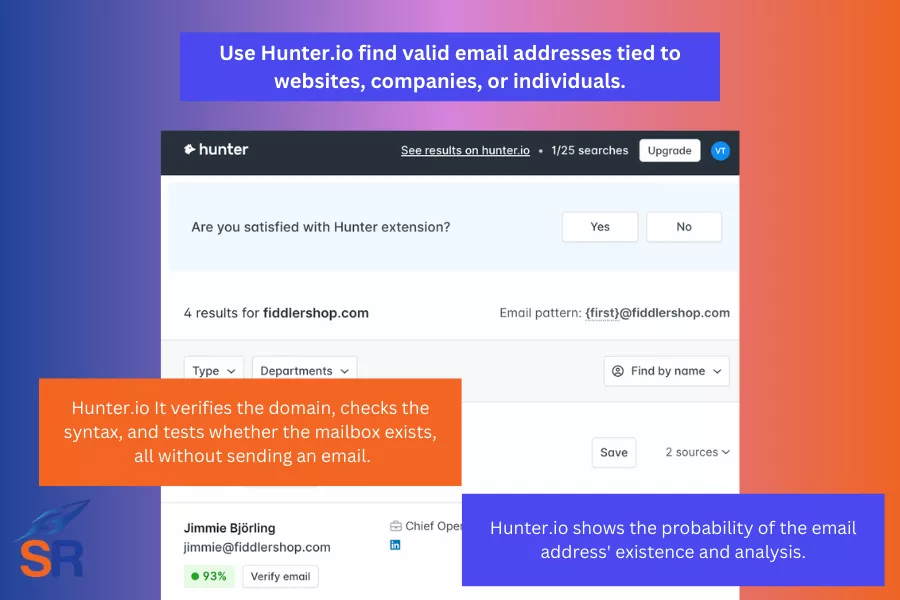
The best use of Hunter is that it helps you find valid email addresses tied to websites, companies, or individuals. Instead of manually searching for the contact person’s email using Google or X search, you can click on the Hunter Chrome extension, which instantly gives you the available corporate emails.
The accuracy of finding emails for outreach is essential in ensuring you get positive responses in email, compared to randomly emailing non-corporate emails (which leaves you with no chance of responses).
Hunter is the best choice for targeted link building that caters to editors and specific departments of companies. It includes names, job titles, and departments, providing you with ready access to decision-makers and editors without wasting hours of time.
Another overlooked feature of Hunter is that it checks for deliverability in real-time. It verifies the domain, checks the syntax, and tests whether the mailbox exists, all without sending an email.
Email verification is crucial to reducing bounce rates, avoiding spam folders, and protecting your domain’s sender score (though most link building agencies use a domain similar to their clients’ domain for outreach to avoid flagging the real brand domain’s sender score).
If you’re a little nerdy, Hunter shows the probability of the email address’s existence, which gives you the confidence that it is the actual email of the person you want to reach out to.
SharpRocket’s Take on Hunter:
If you’re doing a handful of link building campaigns, Hunter is ideal for solo SEO specialists or early-stage SEO agencies to streamline their process for finding email contacts (which, in our experience, consumes most of the link building efforts).
Its paid pricing of $34/mo saves you hours of manually searching for the right email address, which you can instead spend on major link-building tasks.
3. Journo (starts at $49/mo)
If you’re monitoring digital PR campaigns and want to launch one for your website or for an agency client, you need tools to facilitate strategies such as expert commentaries, data-driven PR, and reactive PR.
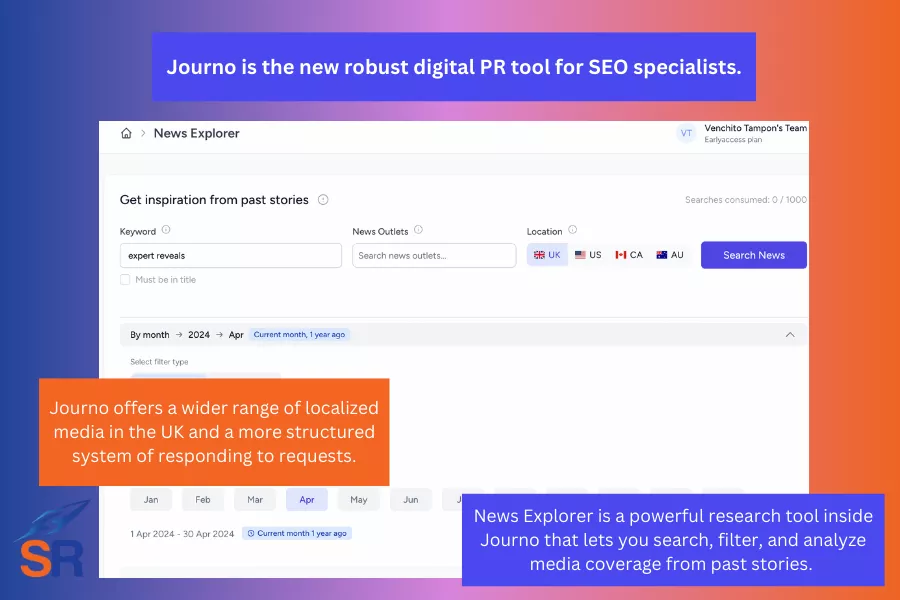
After HARO’s shutdown, many PR professionals and SEO specialists have been looking for reliable alternatives to help them offer real media connections.
Fortunately, we have Fery Kazsoni of Search Intelligence, who’s in the nitty-gritty of digital PR and recently launched his digital PR platform, Journo.
Unlike HARO, which is heavily US-centric focus, Journo offers a wider range of localized media in the UK and a more structured system of responding to requests. It doesn’t overwhelm users with irrelevant queries but delivers targeted opportunities that align with your industry and expertise, making it easier to land quality brand mentions that come with earned backlinks.
Get Featured by Responding to Media Requests
Feature: Quote Responses
Journo gives you real-time access to journalist requests, which is the best use of the tool. These journalists seek expert inputs, brand examples, case studies, or quotes for specific stories.
It puts your business in front of journalists who are actively writing instead of contacting them firsthand without brand recall. Using Journo activates the discovery mode of journalists, which increases the chance your pitch gets noticed and positive responses.
Start by creating a client campaign and correspondents. These team members or client representatives will receive and respond to journalist queries. You could create a profile on behalf of an expert or be an industry expert.
Set up a profile with complete company details, position, description, and social media profiles. Make sure you have these filled out properly, as this is where journalists would likely base their decision on which correspondent to choose from, based on your expert inputs.
Once your profile is set up, you can proceed to Quote Responses.
What I like about Journo is that it filters responses based on the following:
- Industry or topic
- Status (pending, responded, urgent) – helps you prioritize the most urgent quote requests.
- Set bookmarks either with labels of topics or the client’s name (i.e., tags)
These neat features help you organize your media requests, unlike HARO, where you can only categorize media requests using labels in Gmail.
Journo makes it easy for any SEO specialist or digital PR expert to respond to media requests using their clients’ respondents’ profiles. They know that the majority of users of their tools will be SEO, digital PR, and digital marketing agencies, so they make sure that responding to media requests is as seamless as possible.
They also have a feature where you can dictate your answer (using your microphone), so if it’s not you would be responding, you can hand an expert from your team to dictate their answer (without them writing their inputs from scratch). You’ll then edit their answer and send it instantly through the Journo platform.
Ask for Expert Insights to Add Credibility or Find Relevant Angles
Feature: Request Expert Quotes
This feature of Journo works in reverse: you submit a request for expert input. So, for instance, if you’re writing a blog post, guide, or content piece and want to add quotes from real practitioners in your industry, you can use the tool to invite experts to contribute their insights.
Doing so helps you solidify your content assets with experience and expertise (E-E-A-T SEO approach), crafting more helpful content for your target audience.
Instead of soliciting expert inputs on X, LinkedIn, Reddit, and other platforms, you go straight to real experts hungry to give their contributions on Journo.
Generate Content Ideas for Digital PR Campaigns
Feature: News Explorer
News Explorer is a powerful research tool inside Journo that lets you search, filter, and analyze media coverage from past stories. The best part of this feature is its pre-determined keywords, which are exact titles and content ideas patterned after stories that Search Intelligence has encountered with its hundreds of digital PR campaigns.
For example, “expert reveals” or “survey reveals” makes it easier for digital PR or SEO newbies to find data-based or breaking news instantly without rigorously finding them on Google News or other news-related search platforms.
Journo’s News Explorer also has other interesting features that make it savvy for data campaigns:
- By country – filter results by UK, US, CA, and AU.
- By data published – filter results by date published by year, month, or week.
- By news outlets – filter results by specific news outlets in the UK, US, or Global News (e.g., The Sun, The Verge, or Bloomberg).
This level of control helps you refocus your research and focus only on the stories that match your campaign goals.
For example, if you’re planning a digital PR campaign targeted at the UK market, you can filter stories published in UK outlets in the past months and search for keywords like “survey shows” or “study finds.” This reveals which data-led stories gained traction recently, inspiring your pitch’s next content and direction.
You can also sort by “must be entitled” to find only stories where your keyword appears in the headlines. This is useful when studying what types of hooks catch editorial attention.
SharpRocket’s Take on Journo:
Journo is an incredible tool for anyone in the digital PR space. It helps with the ideation and content creation process. Like any other tool, leveraging it for optimal success requires executing and aligning actions with campaign goals.
The real value comes when you dig deeper into the research phase and turn the ideas you generate using Journo into link-worthy digital PR pieces that actually reflect your current media interest.
4. Link Launch (Free)
One of the biggest challenges in SEO is proving the real impact of link building. LinkLaunch helps you justify the value of every single link-building investment. It combines traffic potential, cost modeling, and ROI forecasting in one dashboard, giving in-house SEOs and agencies the data they need to get more buy-ins from stakeholders (for in-house SEOs) and increase link building budgets with clients (for agencies).
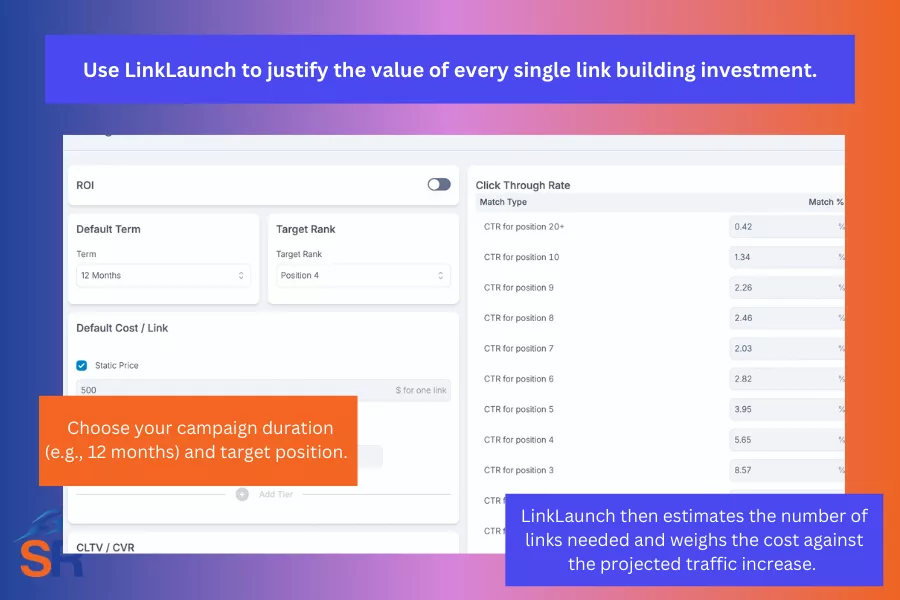
You can use LinkLaunch’s Click-Through Rate (CTR) Model to forecast potential traffic gains. It already has default CTR data by search position. From here, you can set a realistic ranking goal (e.g., position 4). LinkLaunch calculates how much traffic each position could deliver for your keyword.
Then, tie it all together with the cost per link and ROI by setting a fixed cost per link (e.g., $250) or using custom pricing tiers. Choose your campaign durations (e.g., 12 months) and target position. LinkLaunch then estimates the number of links needed and weighs the cost against the projected traffic increase.
SharpRocket’s Take on Link Launch:
Link Launch is incredibly useful to justify your link building investment or ask for increasing budgets to target more competitive keywords or sustain rankings. I recommend this for anyone doing SEO client work for agencies and enterprise SEO specialists who find it difficult to get approvals and buy-ins from stakeholders and defend links with data.
5. SmartLead (Free + starts at $39/mo)
There are many feature-rich and more popular outreach tools, such as Buzzstream and Pitchbox, which I personally tried and found to be highly useful for agencies and in-house SEO teams. Buzzstream is one of the simplest outreach tools, and Pitchbox is for scalable enterprise link-building campaigns with hundreds to thousands of link prospects.
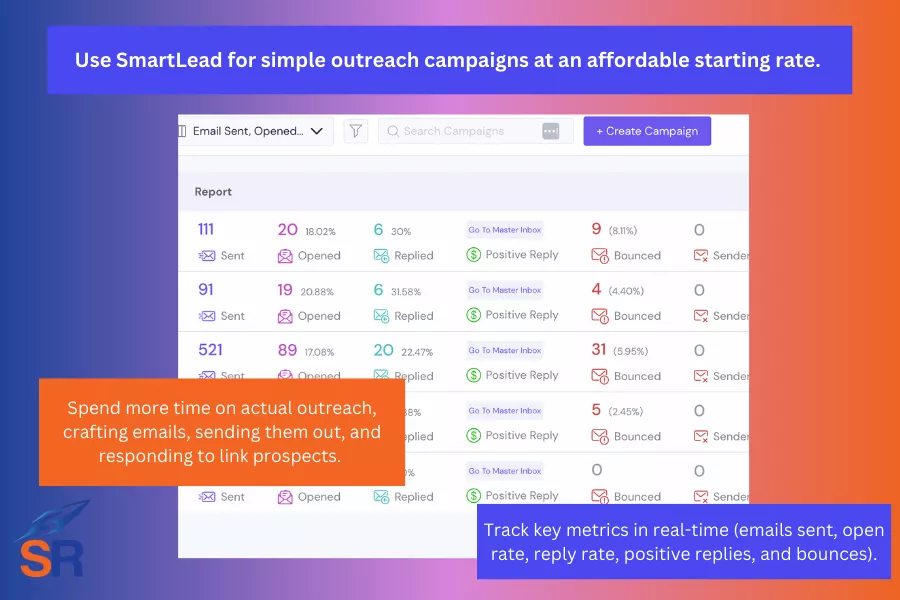
Among all these best outreach tools, our top pick is SmartLead, given its affordable pricing. It starts at $39/month for 6,000 emails per month, compared to Buzzstream’s $24/month price for 1,000 contacts. SmartLead makes it feasible for anyone starting outreach campaigns or just having 1 to 4 small-scale link building campaigns.
Rather than figuring out how the outreach tool works, the easy interface of SmartLead allows us to spend more time on actual outreach, crafting emails, sending them out, and responding to link prospects.
Given that it can track key metrics in real-time (emails sent, open rate, reply rate, positive replies, and bounces), we can assess the results of each outreach campaign, even run an A/B test to see which performs well and refine the campaign as we see fit.
6. SEMRush (starts at $139.95/mo)
If you’re only paying SEMRush for link building tasks, it’s not worth it, given that its immense value comes from non-link-building tasks such as competitive intelligence, keyword research, site audits, and content gap analysis.
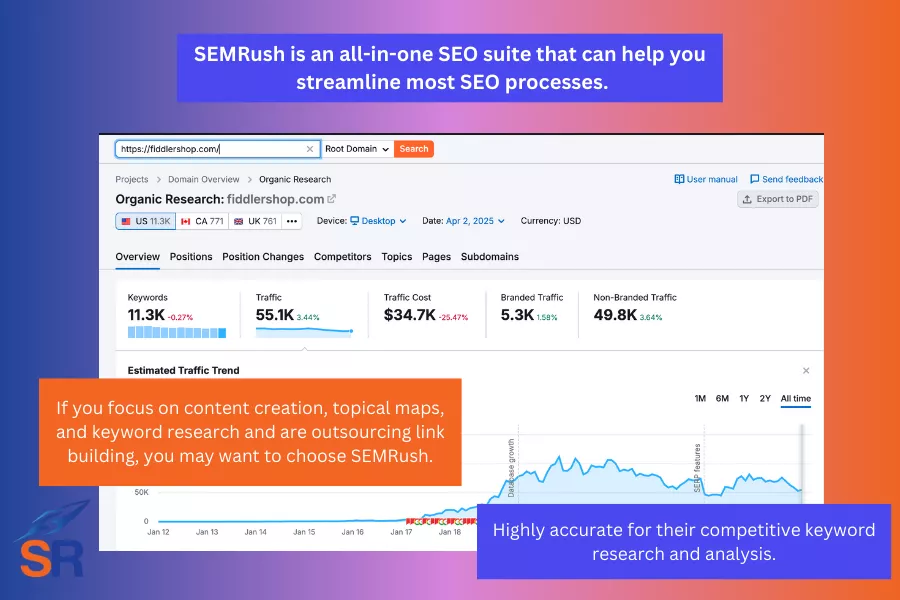
However, SEMRush is an all-in-one SEO suite that can help you streamline some of your processes, particularly in generating keyword ideas using actual data from your site, competitors, and other winning websites.
SharpRocket’s Take on Link Impact:
If most of your SEO work involves link building, consider Ahrefs. If you focus on content creation, topical maps, and keyword research and are outsourcing link building, you may want to choose SEMRush, as it is highly accurate for this competitive keyword research and analysis.
7. Grammarly (Free + $12/mo)
Grammarly is actually a writing assistant, but it has helped us improve grammar, clarity, tone, and originality. While those things can easily be achieved with basic communication skills, for link building and SEO specialists, Grammarly helps ensure you’re creating the highest-quality content possible, whether for writing guest articles, outreach emails, or internal content assets (guides, linkable assets).
Beyond its ability to assist in creating polished linkable assets, it helps to avoid duplicate content in guest posts by scanning them against billions of online sources to detect unintentional plagiarism.
Grammarly has been highly useful for outreach specialists in detecting the right tone, recommending softer or more direct alternatives, and tightening up long-winded sentences or awkward phrasing that could harm our outreach pitches.
SharpRocket’s Take on Link Impact:
Grammarly isn’t a direct link building tool, but it supports the vital process of content-led link-building campaigns: content ideation and editing. For teams producing content at scale, it adds a layer of quality control without slowing them down.
Which Tool Fits Your SEO Strategy?
The right tool depends on your campaign goals, team size, and, of course, budget. Below are helpful questions to help you decide what to use based on your specific SEO needs.
What Budget Do You Have to Work With?
If your budget is tight, free options like manual Google searches for link prospecting and limited versions of tools like Hunter.io can help you get started. These are best when you’re still learning the ropes or handling outreach in small volumes.
But once you’re scaling, investing in paid tools becomes necessary. So, tools like Smartlead, Buzzstream, or Pitchbox (for large enterprise link-building campaigns) can help automate outreach and follow-ups (saving hours of manual work).
For backlink analysis, investing in premium link intelligence tools like Ahrefs, MajesticSEO, or SEMRush is best to provide you with deeper data and better accuracy.
The bottom line is that if you’re serious about link building and want real results, it’s worth allocating part of your SEO budget to tools that increase speed, accuracy, and outreach success.
Are You Working Solo or with a Team?
You don’t need full team features if you’re a freelance or solo SEO specialist tasked with link building. You can use spreadsheets to help you organize your link prospects and outreach campaigns, which can take you far.
However, if you’re working with a team, whether for an agency or with multiple websites as an in-house SEO specialist, then collaborative tools become essential. Link building tools like Pitchbox and Buzzstream let you assign roles, manage conversations, and track multiple campaigns under one account, helping you avoid duplicated effort, inefficiencies it may, and missed follow-ups.
How Much Link Data Do You Need?
Not all backlink analysis tools offer the same depth. If you need detailed, thorough competitor backlink profiles and link intersect features, stick to major link intelligence tools like Ahrefs.
Cheaper tools may look appealing but often come with smaller link databases or outdated indexes, which can lead you to miss high-potential link opportunities.
Do You Need to Report Results?
Clean reporting matters when working with clients, stakeholders, or internal teams. It shows them that clarity matters. So, tools like Ahrefs, SEMRush, SmartLead, and Pitchbox offer built-in reports with visual summaries, link status updates, and campaign metrics.
If you spend hours building reports manually, switch tools with auto-reporting features (of course, you’ll make filtering with the exported data only show what matters).
See our link building services if you need help facilitating these link-building tools. We’ll do all the legwork for you. Book your strategy call.
Authority Link Building: How to Become the Source AI and Search Engines Cite First
Links help build topical and brand authority, reinforcing contextual relevance and semantic associations across the web, which helps search engines better understand the relevance of your product or content to specific topics.
Authority link building is no longer a "nice-to-have" deliverable for many in-house and agency SEO specialists - it's actually the new baseline to positioning your content and product in AI Overviews, Perplexity citations, and other LLM-driven answers.
Link building campaigns must therefore prioritize authority signals as a prerequisite when looking for potential link opportunities alongside "backlink relevance" - as having both metrics for links will significantly impact your brand's ability to show up for traditional organic search results, AI Overviews, and AI Mode.
Here are a couple of tactics you can try to help build authority backlinks to your site.
Niching Down
Choosing topics, product features, or subject matter in your industry where you want to be known for is one of the effective ways to build your site's both brand and topical authority - as it will be easy to be recognizable if you zero in your effforts and activities on few core themes that matters most to your business (think "specialist" than generalist).
Increase and improve your site's content library by publishing pages that cover topics exhaustively, addressing all relevant sub-queries, and semantically connecting them through internal linking - ultimately building your site's overall brand authority and helping you surface more in AIO and LLM's citations.
Having robust content assets in place on your site will also positively impact your link building outreach efforts - as you can use them to develop your credilibity as an author when pitching content for other trusted publications (especially when editors would first want to see the caliber of your content to qualify you as their contributors).
It also assists in your site's natural link acquisition process as you'll get more editorial links from publishers referencing your content work in their future articles - especially when you show up for informational or question-based queries in Google's SERPs (even when it is surfacing AI Overviews).
Standard best practices of content-based link acquisition when niching down:
- When distributing content on other publications, target secondary keywords, FAQs, and customer queries that are only topically relevant to your site to improve and retain focus within the topical clusters you're building on.
- Become regular contributors for targeted authority blogs and publications instead of aiming for several one-time guest posts (as being a frequent writer will help continuously send brand signals to your site, particularly when the entities you're penetrating are perfectly aligned with your site's topic clusters).
- If you're establishing topical authority for new sites, focus on one to two core content themes by covering every topic, query, or question your target audience may be looking for in your content.
And with hidden opportunities that exist in AI Overview citations, smaller sites with strong topical authority can surface on a particular subtopic or piece of content that has a unique perspective - making it more important to get deep coverage in your niche being picked by AIO algorithms.
Back in 2013 to 2017, my go-to strategy for building my personal brand (and our company's branding for that matter) is solely focusing on publishing content assets about link building and content marketing - which up to this date, has been significant to the growth of our link building agency in terms of generating leads every month.
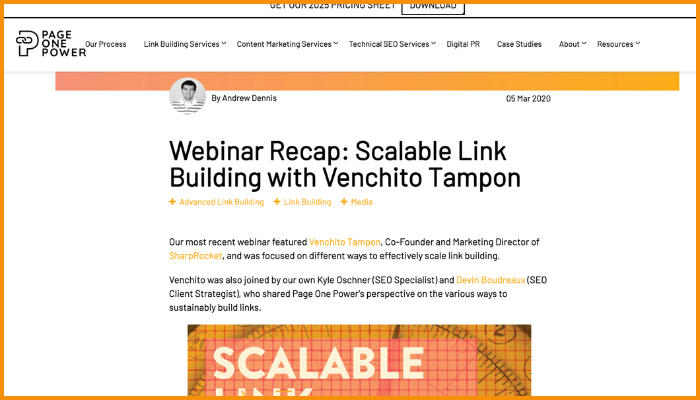
The best thing with this strategic content development is you'll be known for being one of the first authors who write for emerging topics and trends in the industry - which are often overlooked by big publishers that cover a wider variety of topics.
Data Studies
Providing unique insights in your content assets will become a key advantage for brands aiming to level up their authority - as information gain where new, original, and helpful information a content provides beyond what's already known - gets rewarded with better search rankings by Google.
Here are content types that naturally deliver and can increase the information gain score in your content:
- Proprietary data and original research (e.g., industry studies, customer insights, or survey findings)
- Unique methodologies or frameworks that solve specific problems in your niche
- Detailed case studies that highlight real-world applications, outcomes, and lessons learned
- Expert roundups or original interviews that make the content rich
- Comprehensive how-to guides that target untapped topics (and that go beyond basics and offer nuanced solutions)
- Comparative analyses that highlight gaps or differences in tools, strategies, or platforms.
Ahrefs has been consistently producing data studies for the past few years, which has helped them automate their natural link acquisition process.
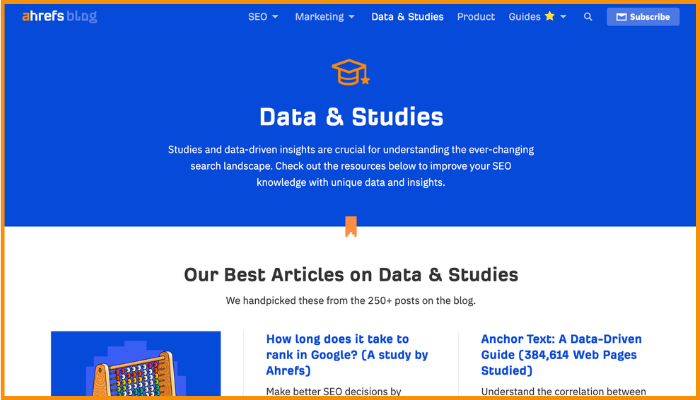
This type of linkable asset tends to attract authority publishers who want to reference data studies to support their claims.
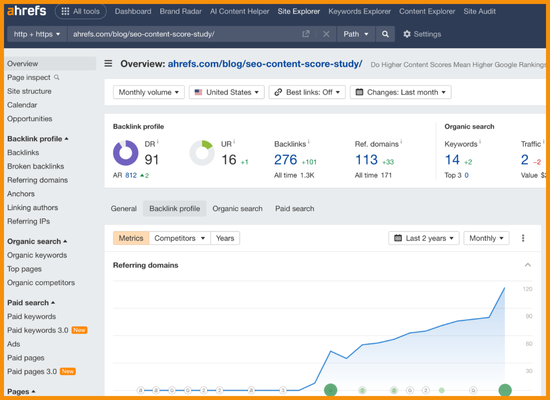
Don't have internal data? You can conduct customer surveys to gather original insights using simple polls or feedback forms through tools like Jotform or Google Forms.
Multi-Sourced Citations
Getting links from established entities, names, and publications that can distribute authority through links can help stack up your site's overall branding and reputation - increasing your brand's visibility on AI Overviews and AI Mode.
Target co-citations from publications already citing trusted entities in your niche, given that, as you get mentioned in the same places as niche authorities in your industry, Google will start to associate your brand with similar levels of expertise and topical relevance.
You can use Ahrefs' Link Intersect or any similar link building tools to find listicle pages or any content piece with sections that compare products, providers, or tools that already link to multiple competitors.

Assess the content from a publisher's perspective and identify angles that align with your brand, such as a unique value proposition and strengths in your product features, stories, or use cases that make your product or service stand out.
Use your brand's point of view (POV) when reaching out to these publishers and suggesting your brand as a great addition to their lists.
Brand Messaging
Monitoring how your brand is perceived within the LLM's atmosphere can provide you with insights into positioning your brand messaging, which can help refine your link building campaigns to focus on strengthening your brand message.
Identify sources currently defining your brand in LLMs by assessing certain elements to help you refine your LLM citation strategy - here are a few questions to help you out:
- Which brands or experts are most frequently referenced in your niche?
- What tone, phrasing, or terminology do LLMs use when referring to your brand or competitors?
- Which value propositions, features, or differentiators are being emphasized?
- Are there inconsistencies, outdated facts, or misalignments in how your brand is portrayed?
Ask LLMs questions directly to show you precisely what they pull from their training data about your brand.
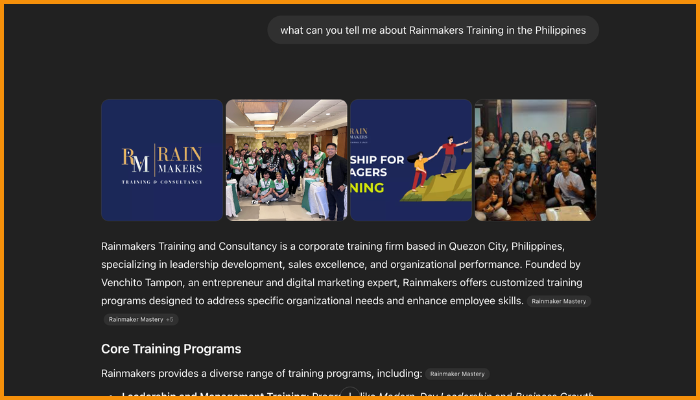
Check if the descriptions are accurate. If you find any discrepancies, you can fix them by updating the actual source information on your website, such as your About Us page and any FAQ pages. You can also revisit your citation listings and profile websites like Yelp, Google Business Profile, and Trustpilot.
Enhance your brand messaging by ensuring consistency across all platforms.
Use Ahrefs' Brand Radar to discover third-party sites with strong AI overview visibility and consider strategies to partner with them to increase co-citation opportunities.
Reverse Link Reclamation
Link decay naturally happens for websites that have been existent for years because of many reasons that even the actual editor who initially gave the link that was lost may not be fully aware of - instances such as site redesign, content pruning or accidental link breaks during CMS updates can actually lose some of these high-quality backlinks.
That's why it's always essential to conduct backlink monitoring not only for recently built backlinks, but also for lost links that still hold brand value.
Especially with how LLMs surface citations, unlinked brand mentions with positive sentiments across the web are critical trust signals in influencing how often your brand appears for conversational bottom-of-the-funnel queries in AI-generated results.
You can use Ahrefs' Lost links report to spot any backlink drop-off to your site and assess whether they can be recovered by re-engaging the original referring website or simply requesting the reclaiming of mentions that were previously removed.
Certification Programs
Certification programs are another asset that companies can leverage to improve and scale their site's linkability - especially when it is aligned with the main product or service's positioning and actually helps drive more conversions to the business.
Just think of Ahrefs Certification and SEMRush Academy - both of which have individual courses beneath them that get a ton of links, along with branding opportunities from users who showcase their "certification" as badges on LinkedIn, blogs, or portfolios.
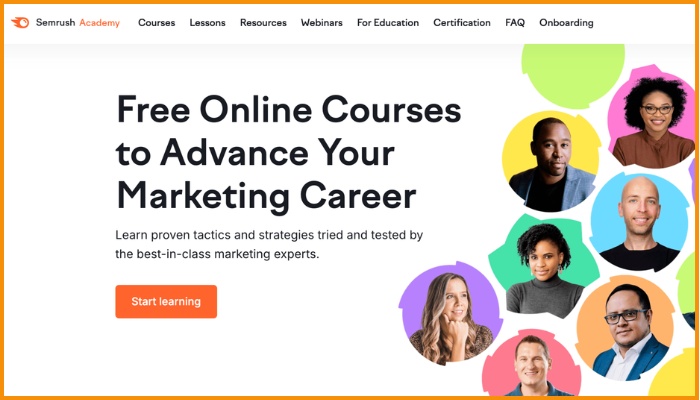
It could also help naturally earn mentions from learning directories and industry roundups that include "Best Courses [Industry]" and often link out to reputable certifications.
Branded Micro Exact Match Domains
This is one of the oldest tricks in the link building book, but it still works effectively, especially when the exact match domain has a distinct brand identity apart from the business it's giving brand value to.
Recently, we've launched our own microsite to help us gain more visibility for our main coffee shop franchising brand.
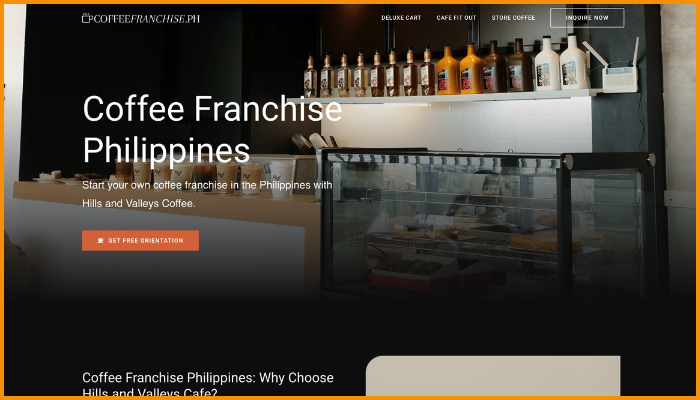
This new entity can help expand the business in so many ways, such as:
- Naturally builds relationships with other publishers that we can also pursue for the main business.
- Establishes as another effective lead generation as it can appear in AI Overviews, and ranks well for traditional search listings using its own content development, branding, and strong technical SEO - as EMDs still gets favor by search engines - this has been tested by James Norquay from Prosperity Media and has been their go-to strategy for years.
- Provides more content creation insights into what "use cases" haven't been published for, based on search data for keywords the webpages are currently ranking for.
- Improves the main business' visibility by creating its own listicle or roundup for product or service providers, highlighting the primary products/services' POV at the top of the list.
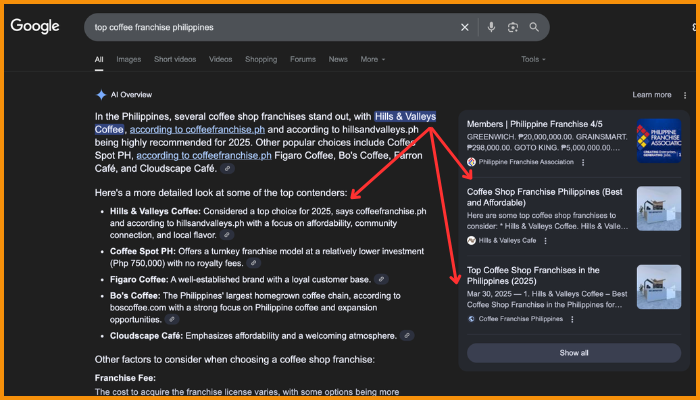
The result of this strategy has been quite interesting, both in terms of its own brand visibility and in helping our main business surface higher on AI Overviews and LLMs.
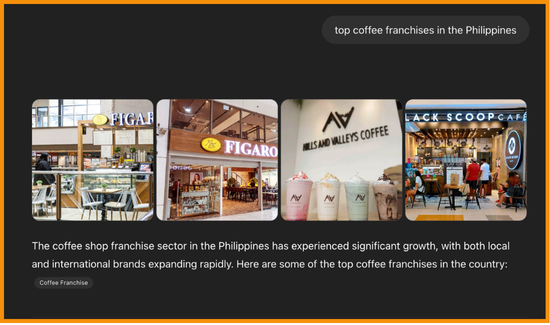
Editorial Review by Expertise
Inviting guest authors to write for your blog has been a standard practice for years, and it's still one of the best ways to develop new relationships with other content contributors while getting expertly crafted content that will help gain more visibility and leads for your website.
However, for many blogs, the editorial review has been overlooked for the reason that they're more interested in the volume of these articles than having to qualify content from few authors who can bring strong EEAT to content - accepting more average guest authors and having only one editor who will handle all the editorial reviews for submitted articles.
One of the key strategies to maintain accuracy, authenticity, and establish strong EEAT signals is to have multiple editors with technical expertise assigned to review articles in specific categories.
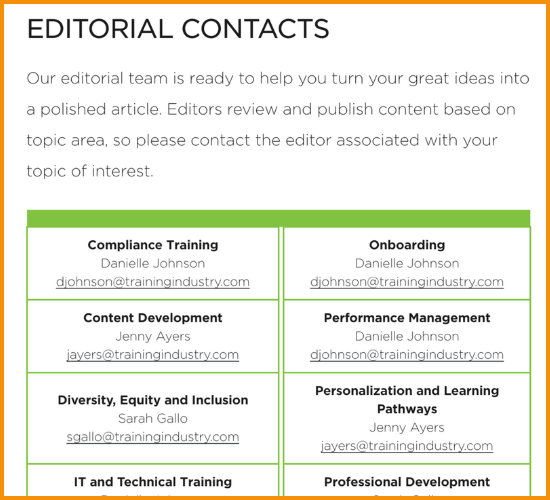
Aside from benefiting from better assessment in technical expertise, having a designated expert editor to review articles will have more advantages than one generic editor:
- Assess the potential "information gain" by seeing unique perspectives, insights, and ideas that the content could provide in adding something new to the existing body of knowledge.
- Spot technical or nuanced errors that a generalist might overlook, leading to higher subject-matter accuracy.
- Validate the use of reliable, authoritative sources, and suggest more impactful sources that are more aligned with the topic, if needed.
- Suggest improvements for better content structure and depth, even during the process of outlining the content.
Having expert editors will also help combat fake EEAT-author bios, which Google has been cracking down on recently in its ongoing effort to validate real expertise.
Don't have multiple expert editors? You can ask other influential authors within your networks if they can peer-review your content.
Founder Stories
One of the best ways to exemplify the brand's expertise and authority is by telling authentic stories of the founder or leadership team who actually built the company and made it successful - given that stories serve as living proof of experience demonstrating what the brand truly stands for and how they earned its place in their target niche.
Founder stories and leadership narratives often showcase real-world challenges, strategic pivots, and lessons learned that go beyond surface-level (hype) marketing and allow both the audience and search engines to recognize the brand as a trusted voice in the industry.
Journalists often pick up these types of stories, given they are constantly looking for narratives that evoke emotion or ones that showcase breakthrough moments, as they are more relatable and have a high shareability component ("virality effect for the right audience).
For instance, Louis Smith, founder of Rebel Aromas, has been gaining brand visibility for his company lately after they landed a front-page feature on Entrepreneur (DR91 link).
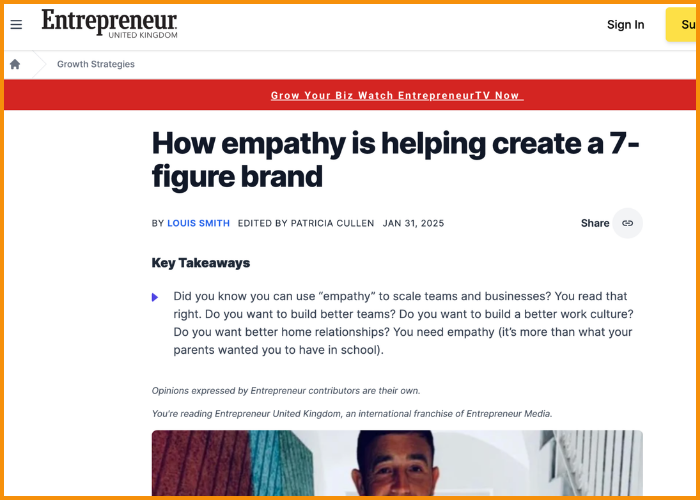

And from that actual feature that brings their company to a whole new level of exposure, including being invited to appear as a cast member on a Channel 4 television show in the UK.
Digital PR campaigns can integrate well with other online brand marketing initiatives, such as increasing positive brand sentiments on social media, which helps build brand mindshare, as well as securing more company features in traditional media outlets (e.g., newspapers, magazines, and TV).
Homepage Links
The recent study by SiegeMedia, led by Ross Hudgens, has yielded new insights and shifts in improving conversion potential and branding efforts on the homepage, as the study reveals that homepage traffic increases by 10.7% from AI Overviews and LLMs.
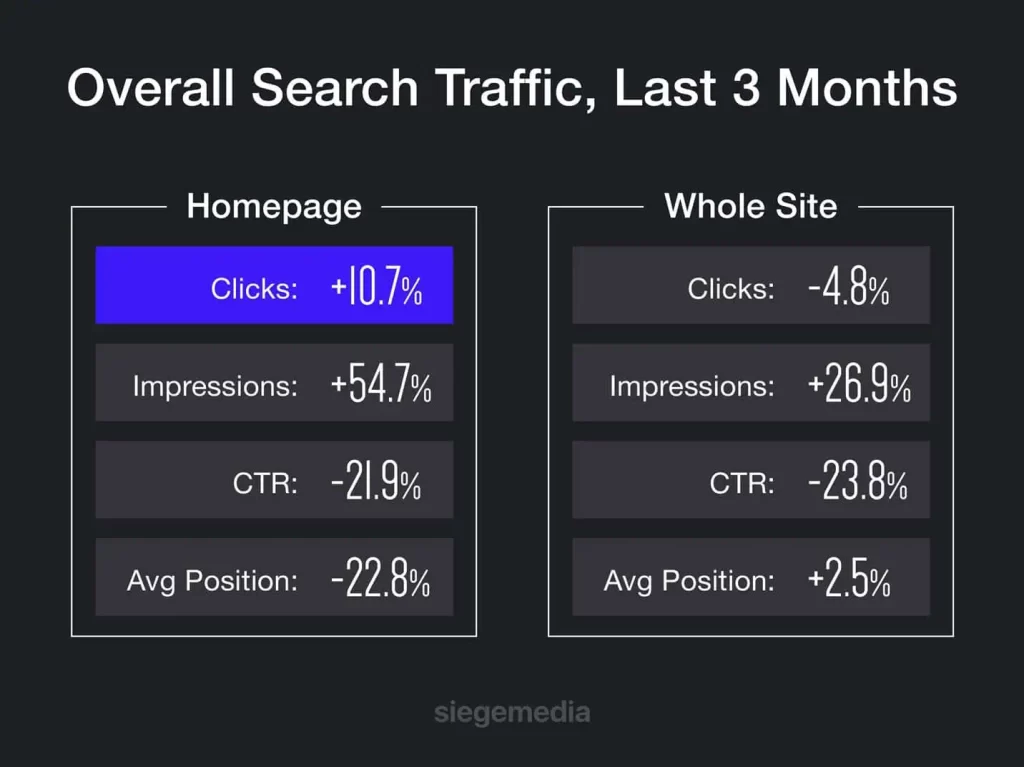
This leads us to consider more online marketing efforts, including improved link development campaigns that target the homepage.
Here are a couple of homepage link building tactics aside from the traditional link building strategies that you're already aware of:
- Create a data-backed "State of the Industry" Report that you can feature on your homepage and serve as a citable element for other authoritative publishers and journalists to link to you as a reference to their own content.
- Create a media kit or "Press Room" section that hosts your brand's media assets and press information, allowing journalists to reference either directly from your homepage or a specific author or personality page.
- Curate a public-facing' brand timeline" or milestones journey of your company that you can use as a value asset in press releases and founder stories.
- Include "impact" or "social responsibility" initiatives that showcase your brand's advocacy or sustainability efforts, which you can also promote to local news and NGOs that often link back to these types of initiatives.
Want to build backlinks that actually move the needle for brand visibility and authority? We design high-impact link building campaigns to achieve higher visibility in both traditional search and AI-powered results.
See our link building services, and we'll help you become the source, not just the search result.
How to Build Topical Authority in 6 Proven Steps [w/ Examples]
Google obviously favors brands because people trust them, which results in favorable rankings on search engine results pages (SERPs).
As established brands benefit from strong domain signals, they consistently receive branded searches, multiple brand mentions across the web, and a robust backlink profile, with several authoritative sites referencing their work through inbound links.
We even see average content hosted on high-DR sites ranking within days of being indexed, demonstrating the power of branding in SEO.
But what if you're doing SEO for new websites?
It's often an uphill battle to compete against search giants in your industry. It'd take years, let alone the resources you have to invest appropriately to ensure you're getting the right ranking spots.
The best way to approach your SEO strategy is to go narrow and deep, rather than trying to rank for every head term. You hyper-focus on one topic cluster at a time, covering every relevant subtopic with helpful content.
Not only are you sending relevant signals to search engines this way - about the clarity they need to associate your website with a given area of expertise. But as your topical coverage grows, so does your brand visibility, trust, and ranking potential (to even rank for more competitive keywords).
How to Build Topical Authority?
Below are the steps to build topical authority from the ground up, with examples from our own test sites to show you how it works:
1. Organize Your Content Using Topic Clustering
One strategic SEO approach is to create topic clusters to plan out your content and create a smart internal linking structure.
Topic clustering is an SEO-driven content strategy that organizes content around a central theme by linking a main pillar to multiple supporting cluster pages. Each cluster article (also called "clusters") targets a specific subtopic, while the pillar page (also known as "main hubs") covers the broader theme.
Topic clustering is critical when building topical authority, as it helps:
- Strengthens your position for AI search - AI crawlers look for authoritative sources when scraping content, so establishing yourself as a trustworthy source through complete topical coverage can increase the likelihood of surfacing in AI results.
- Improves topical relevance - connecting related content strengthens Google's perception of your site's expertise on the subject.
- Better UX - your target users can easily navigate to what they're looking for, between related articles (increasing time on site and user engagement).
- Smarter internal link equity - easily do internal linking between main hubs and cluster pages, distributing link equity across your site, assisting more important pages to rank for their individual keywords.
- Fills content gaps - covering all relevant subtopics that address every stage of the user journey and search intent, particularly those near the buying decision stage (MOFU and BOFU).
- Improves crawlability - a clear cluster format makes it easier for search engines to crawl and index your content.
If you want to go deeper with these, here are extensive resources on topic clustering:
Organize topic clusters in a spreadsheet (or any project management tool) by including the target URL structure, content format/type (i.e., list type, guide article, review).
You can also use AI to automate the process by giving you actual topic clusters you can actually use (or just use as an inspiration for your target content topic).
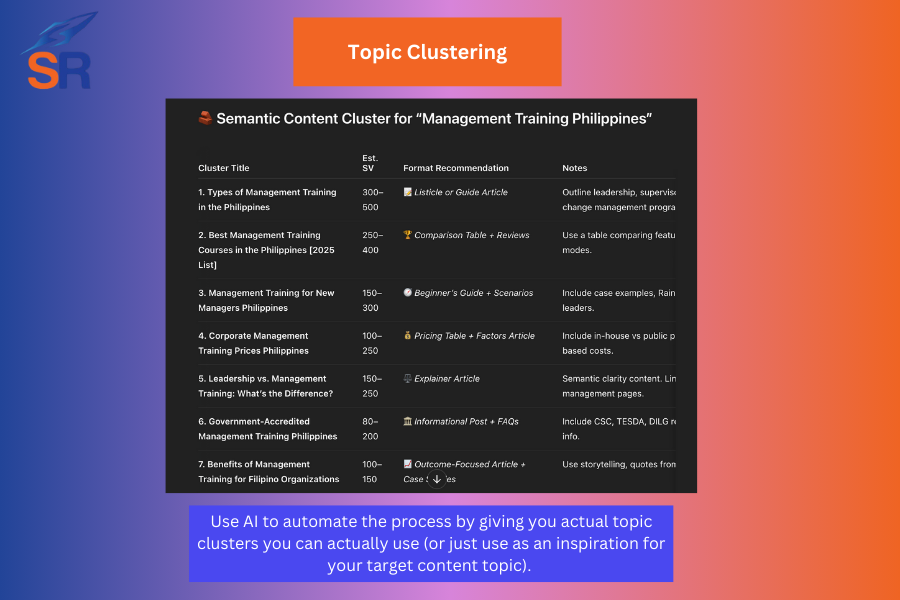
You may also want to match it to keyword research tools, such as Ahrefs or SEMrush, to get a quick look at the current search volume for each topic. It will give you ideas on what keyphrase to optimize each cluster page for.
Use your human judgment when picking cluster topics, as you don't want to base it solely on search volume. In many cases, most subtopics may have lower search volume, but they are significant enough to create content around (as they will cover a content gap in the industry compared to your competitors).
2. Build Strong Pages with Proper Topical Structure
Once you organize your topics into clusters, the next step is to structure each pillar and cluster page properly.
Structure the page around the searchers' intent, needs, and semantic expectations. And the best way to start is to do a Google search for the topic you're writing about.
Come from the perspective of a typical Google user, and ask yourself, "What exactly am I looking for this topic?".
Jot down ideas and let them inspire you when structuring your content for satisfaction.
Here's how we structure our content for maximum topical strength.
Satisfy Search Intent.
Placing the most important points at the top of the page is one way to satisfy your searchers' needs. Avoid burying the main answer deep inside your article.
Summarize key takeaways early, using clear lists, TL;DR sections, or quick bullet points, just make sure the search can easily find what they're looking for. By doing so, you reduce the chances of searchers pogo-sticking (bouncing back to the search results and finding another relevant page, which indicates you didn't meet the searcher's intent and needs).
Make a Succinct Content Outline
One of the fastest and most effective ways to build a comprehensive content outline is to study how top-ranking pages organize their content. At the very least, Google has ranked this content. Having your asset matched to what's already ranking is a good way to start - then improve it as you go.
You can use free tools like Detailed.com to instantly view the meta tags, H1s, H2s, and key structural elements of the top-ranking pages for your target query - you'll do so by individually going to each page in Google's SERPs.
Rebuild a similar structure but make it more comprehensive by addressing deeper needs, as well as adding additional headings and subsections that the top pages may have missed.
There are several content optimization tools available that automate the entire process; a few notable ones include Surfer SEO and Ahrefs' AI Content.
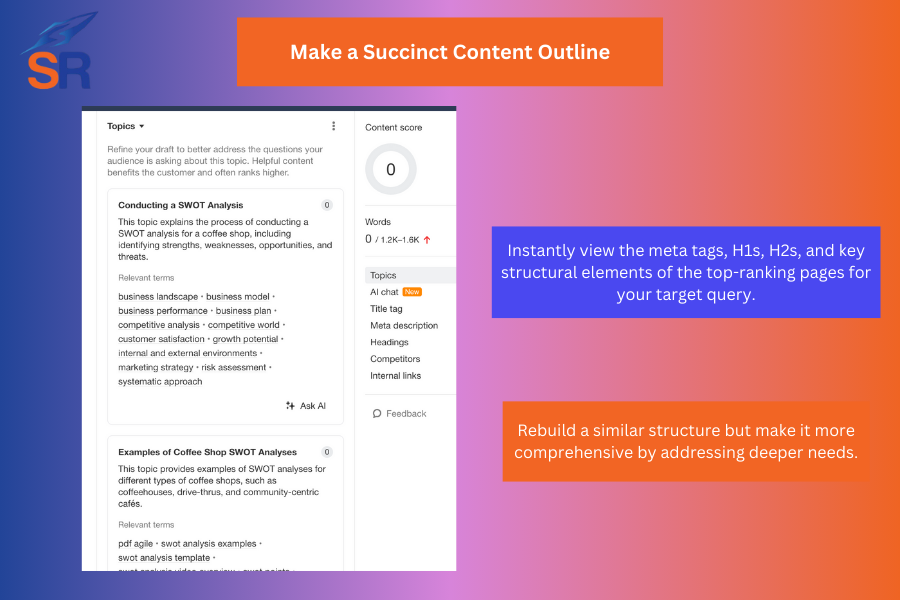
Incorporate FAQs and FUQs
Adding FAQs has been a standard for many publishers, which I sometimes think they have used only to make content longer without adding substance to the topic.
But you can actually go deeper in your content by adding FUQs (Frequently Unasked Questions).
FUQs are questions that users haven't asked widely yet but are likely to as the topic matures or user sophistication grows.
These are also types of questions that are starting to surface more often inside AI-driven searches. And by incorporating them early on, you get the benefit of making your content more discoverable for future new PAA boxes and emerging searches on both traditional search and AI.
One of the best tools for finding FUQs, especially on bottom-of-the-funnel pages, is Xofu, a new tool created by the Citation Labs team.
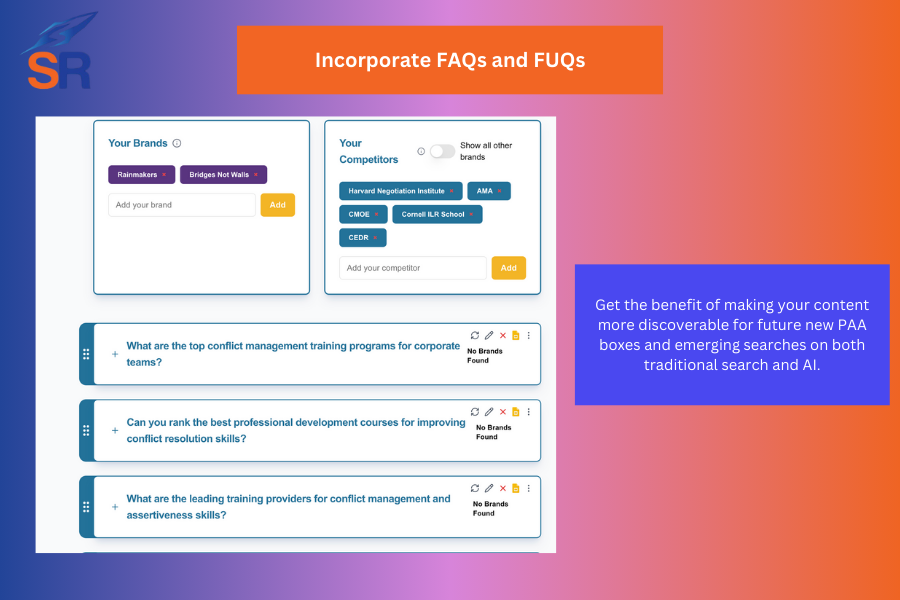
You can also use AI to scan for related but less common questions when you search your topic (use your human judgement based on your audience research, which topics are worth incorporating in your content).
3. Expand Content with Greater Topical Depth
As the term suggests, topical depth means covering a subject thoroughly across all layers of user intent, experience levels, and situational needs. And by accomplishing this, you develop your website into a comprehensive and go-to source of information in your space, giving other publishers a reason to cite you when writing their content.
You can start with the most basic method, which is to align your content to different stages of the marketing funnel (TOFU, MOFU, and BOFU).
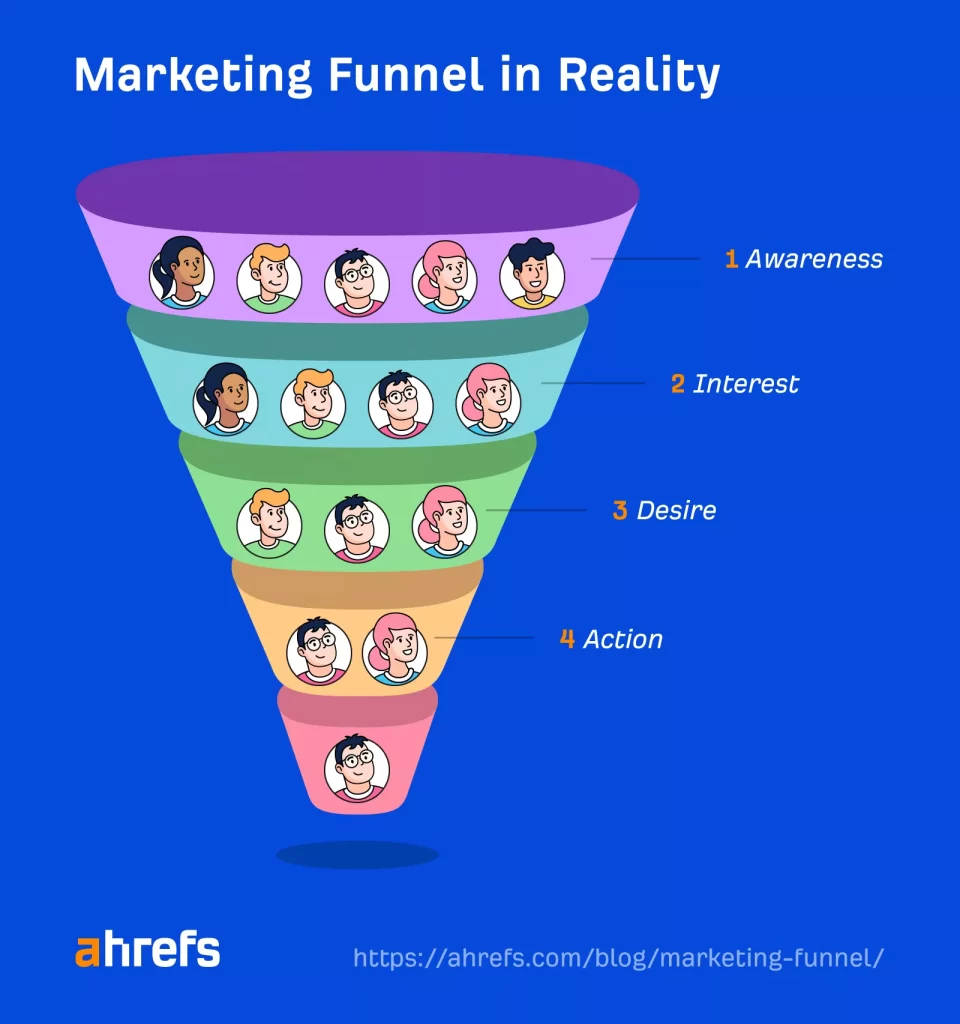
Although we've focused heavily on creating conversion-oriented content lately to maximize SEO investment (i.e., MOFU and BOFu content), as it not only captures significant search traffic but also actual organic revenue.
Publish Next-Step Guides
I learned this from Jason Acidre, who found that targeting higher expertise levels is an effective way to differentiate your content from other competing publishers, as most are now targeting beginner audiences.
You can start with introductory guides to capture entry-level searchers, but have follow-up layers of content assets for intermediate and advanced searchers.
This is also a good way to do internal linking by offering your beginner's guides the next steps of learning (i.e., 102).
Include Microsemantic Details
What is microsemantics?
Microsemantics refers to the fine-grain pieces of information that real users often include when they search, including numbers, audience types, locations, timeframes, and specific use cases.
These are exact nuances that your competitors may have missed in their content, but will be your true advantage if you've taken the time to include them in your page.
By strengthening semantic connections within your content, you help search engines better understand the full scope of your topic, which in turn increases your site's topical relevance.
Readers would also instantly recognize that your content is tailored to their real-world context, as you speak to the exact scenario they're currently facing, making your content more engaging and reliable to consume.
And with how AI has evolved through deep research, you give your pages a better chance of being cited during deep AI-driven content scraping and synthesis (you appear in deep research answers from AI).
Here are examples of microsemantic elements you can insert into your content:
- Price ranges (e.g., "Management training programs typically cost between ₱50,000 to ₱120,000 for a 2-day course in the Philippines").
- Timelines (e.g., "Participants often see improvements in leadership skills within 3 to 6 months after completing a management training program").
- Industry examples (e.g., "Management training tailored for the healthcare sector vs. retail industry").
- Professions or user types (e.g., "Best management workshops designed for newly promoted supervisors").
- Geographies (e.g., "Demand for management training in Metro Manila and key provincial cities in the Philippines").
- Target audience specifics (e.g., "Leadership courses focused on frontline managers handling customer-facing teams").
By delving deep into your content's topical structure with microsemantic details, you increase your site's EEAT signals, as only authors with expertise and experience can dissect information and clearly identify what truly matters to their target audience in their content.
Cover Unique Angles
Identify what your competitors have missed and fill those gaps in your content. When your competitors usually stick to the obvious points just to increase word count (i.e., adding too many basic definitions, unclear how-tos, or surface-level advice), you take advantage by including unique sections, perspectives, or details that are not present yet in many competing articles.
Focus on missing elements, such as:
- Deep user cases or applications that competitors have not discussed (i.e., leadership training for mid-level managers)
- Contrarian views or alternative approaches that offer different solutions (best for niches with different ways to attack the problem - i.e, "home improvement hacks").
- Common mistakes or misconceptions that no one else is warning about/
- Share topics for new learning with other levels of the audience.
Most SEO professionals view content gap analysis as simply filling keywords that other competitors haven't covered yet, but it also primarily involves filling missing angles to make your content a stronger endpoint for searchers, thereby providing higher satisfaction for your target audience.
You can also use the missing elements above when writing your opening hook in your content, immediately capturing your audience's attention and showing them how your content differs from the rest, even without skimming the table of contents.
Include Entities
I won't delve into this since it's already covered in many SEO guides. Basically, you want to naturally mention relevant tools, brands, personalities, organizations, and key concepts within your content, as these real-world references can enhance the semantic richness of your page and help search engines better understand its topical relevance.
Create Your Own Frameworks (or Bundle Existing Ones)
Developing frameworks and models is a standard practice when crafting training designs for the talent development space, which I adopted as a critical component in content publishing. Whenever I create helpful content for my test sites and clients, I replicate the same content creation strategy.
One upside of creating frameworks is that they simplify learning for my audience, as they present the topic in a more strategic and structured way.
If you're looking for where frameworks make sense to create or bundle with, here are a couple of elements of topics where it matters the most:
- Stages - Making complex processes easier to follow, step by step. (Example: Leadership development mapped into Assessment → Planning → Implementation → Evaluation.)
- Tools - Grouping recommended tools into a framework simplifies decision-making and standardizes the execution path for users. (Example: Using DISC assessments, leadership simulators, and 360° feedback tools in a management program.)
- Metrics - Defining clear metrics inside a framework shows users how to measure success and track real progress over time. (Example: Tracking leadership promotion rates 90 days after program completion.)
- Timeframes - Time-based checkpoints structure expectations, helping users stay accountable to deadlines and avoid procrastination. (Example: Reviewing leadership reinforcement plans every quarter after training.)
- Benchmarks - Before-and-after comparisons fit naturally into frameworks, making improvements or gaps visible and motivating action. (Example: Comparing team productivity metrics before and six months after management training.)
- Critical Actions - Highlighting essential actions gives users a focused execution plan, rather than overwhelming them with general advice. (Example: Requiring 1:1 coaching sessions within two weeks post-training.)
- Progress Indicators - Milestone indicators within a framework reinforce momentum and show users how to recognize early wins. (Example: Completing leadership application projects within 60 days of training.)
- Scenario Applications - Scenario-based variations make frameworks adaptable, helping users apply concepts in different real-world situations. (Example: Applying conflict management techniques during team reorganizations.)
- Audience Variations - Tailoring frameworks to different audience types ensures relevance, personalization, and better user engagement. (Example: Offering different leadership tracks for supervisors versus senior managers.)
- Support Systems - Including support layers (like mentors, coaches, or peer groups) strengthens the framework by building accountability and sustainability. (Example: Forming peer learning groups for leadership trainees.)
- Outcome Expectations — Anchoring a framework around defined end goals keeps users focused on results, not just activities. (Example: Setting a target of achieving 80% manager satisfaction scores post-training.)
- Adaptations for Scale — Frameworks that adjust based on team size, budget, or resources make your models scalable across different user needs. (Example: Modifying leadership workshops for teams of 5 versus teams of 50.)
- Skill Progressions - Layering skill-building stages into frameworks helps users advance systematically from beginner to expert levels. (Example: Moving managers from basic delegation skills to advanced strategic decision-making over 12 months.)
4. Cover Topics Fully to Strengthen Topical Coverage
What is topical coverage?
Topical coverage is how broadly and completely your entire site (or section) covers all the important and related topics in a domain compared to competitors.
By widening your content scope, you increase your content gap against your competitors, helping you to capture a bigger search market by ranking for relevant keywords they're not currently dominating.
Content Gap Analysis
Start by analyzing the topics your competitors cover by simply doing a manual Google search for them, using the site:domain.com search operator and the topic keyword. Adjust your topics based on how specific or broad your site's content theme (i.e., the niche you're trying to build topical authority in).
You can also run a content gap analysis comparing your site against your top competitors. Use tools like Ahrefs' Content Gap Analysis or SEMRush to find topics your competitors are ranking for that you haven't covered yet.
Review your topic hub structure and identify where you can incorporate topics identified from content gap analysis.
Emerging Keywords
Emerging keywords are often early signs that your site is gaining more topical relevance for new queries for which your pages are currently ranking.
Go to Search Console to find keywords that are relevant but not fully addressed by existing pages, which deserve a dedicated content piece.
Anonymous Queries
Pro Tip: Uncover more queries your pages ranked for but haven't been revealed directly in Search Console. Use Ahrefs' Anonymized Queries report, located in the GSC section, to surface hidden keyword opportunities.
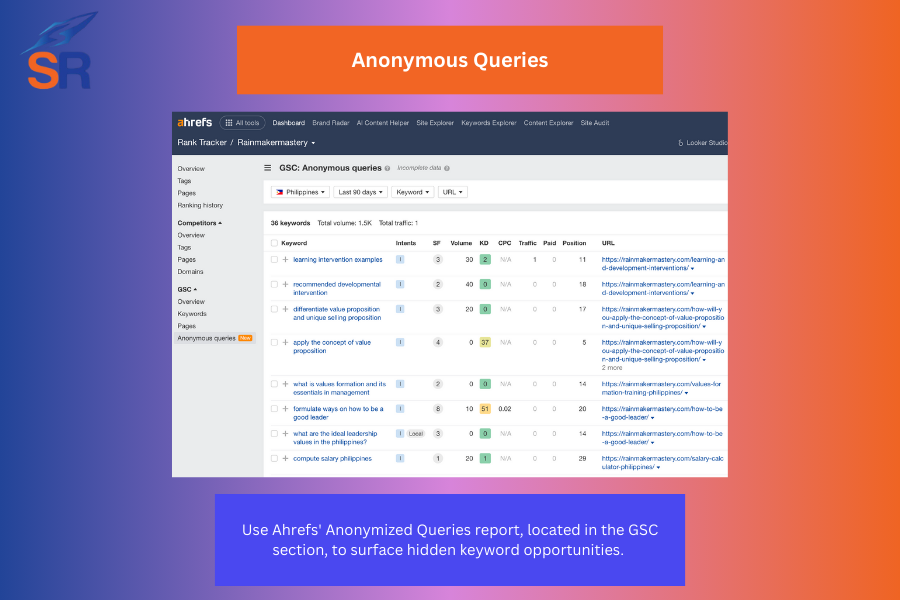
5. Increase Content Velocity to Accelerate Authority
What is content velocity?
Content velocity refers to the pace and volume of publishing, which is crucial for establishing topical authority.
Data-driven Approach to Content Velocity
Ross Hudgen's approach to estimating the target content volume each month is a strategic content marketing play. Given that you'll be investing resources in every content piece (research, time, design, etc.), it's essential to back up your efforts with data to ensure you're not just meeting random content volume goals.
Use Ahrefs' Organic Pages view to see how many valuable pages your top competitors are creating. Ahrefs only shows pages that it has indexed in its database and that appear in the top 100 keywords.
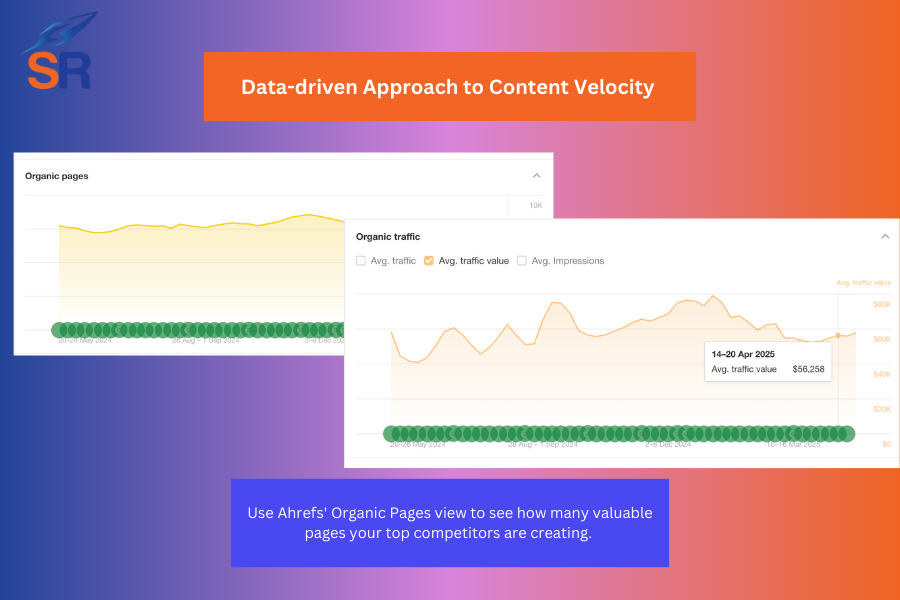
It's a good metric to see to help you plan realistically against your market. For instance, if a competitor is publishing 700 posts a year (that's around 58 new posts per month) - you can use it as one factor in benchmarking content volume.
Consider other relevant factors as well, such as traffic costs and your team's executional capabilities (how quickly your team can create content every month without sacrificing quality).
For traffic value or cost, you can use Ahrefs or SEMrush to see how much your competitors' content is worth. Then, tie your content velocity back to the number of relevant, high-quality topics that have business potential.
Lastly, consider how confidently your team can produce helpful content within the target volume. After all, you want to ensure every content piece passes your own editorial standards, so all of the pages would positively impact each other's rankings by building your site's topical authority.
Match Content Velocity to Your Site Authority
Another method to determine content velocity is to consider the reality of your site's authority (how many indexed pages do you currently have on your site for the topic (s) you want to build topical authority in)?
For a new or low-authority site:
Focus first on publishing content for winnable, low-competition keywords. You can use the "Avalanche Strategy", where you start slowly publishing content, capturing smaller topics, and building trust for your pages one step at a time.
Be careful not to flood your site with hundreds of pages overnight without quality control or topical structure.
Publish regularly at a consistent pace so that Google sees it as a sustained effort, not just a one-off.
For an established, high-authority site:
Larger content rollouts are viable for established websites (e.g., with 300+ pages over a few months), as Google already associates your domain with trust and relevance. You can expand aggressively into related topic clusters to further widen your topical authority while still reinforcing existing domain strength.
Refresh and Update Content
It's a strategic content marketing technique to increase content volume, but it's equally important to freshen and update existing content to maintain the topical strength of your site.
As you grow topical authority with new content assets ("outward approach"), you update existing content assets to satisfy searchers ("inward approach") - to continuously send positive freshness signals to search engines, which they reward through better rankings.
It would be easy if you had a couple of pages to update, but if you have a large website with hundreds or thousands of pages, which one should you prioritize for content freshness?
You begin by first identifying topics with a shorter content freshness distance. Use the Freshness Distance Calculator to estimate how critical content freshness is for a given search query or topic - do it for your primary keywords first, then eventually for your secondary keywords - ones that also critical to your business.
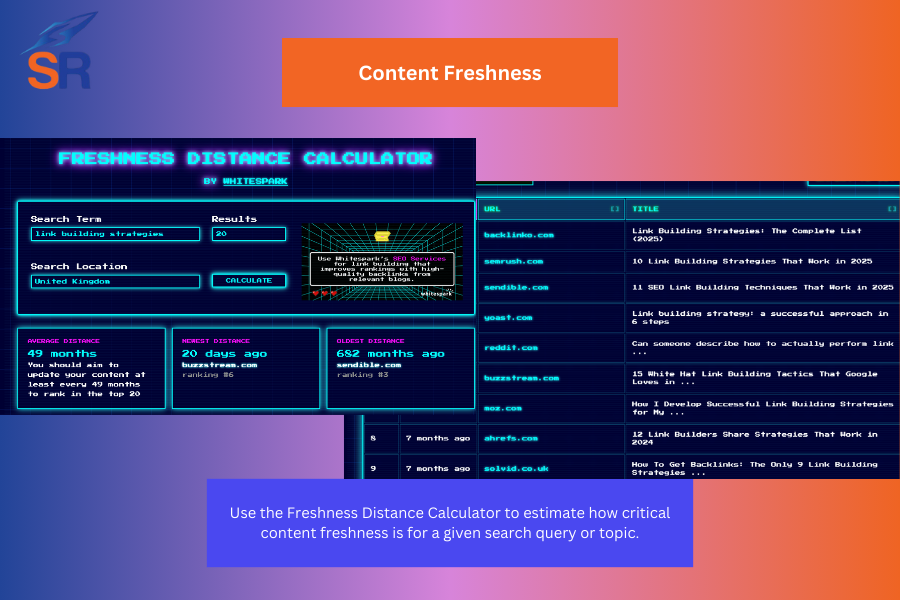
Then, organize it by adding a column for "freshness distance" (i.e, how many updates are needed to update the content).
Include it as part of your regular content audit to first look at pages with the shortest freshness distance.
6. Micro-Authority Link Building
If you're a fan of this blog, you've heard me say this several times, that link building can significantly impact your topical authority, as you build links (votes) from other trusted and authoritative websites (which Google considers to be a strong factor in determining which site is a credible, real, and trustworthy).
I've written several link building guides on how to build backlinks:
But here are the ones you may want to explore in building micro-authority through link building:
- Get exposure and relevant links by appearing on niche podcasts in your space. You can pitch to be a guest or have your allies interview you on their podcast shows.
- Attract interview opportunities by being active on social media platforms and responding to topical, relevant questions through social commenting. With this, you're building radars for mid-level influential content creators to invite you to their show or ask you pertinent questions for their content.
- Publish more linkable assets to show expertise and build your personal brand - ensure you have a solid author bio that showcases your experience and expertise as an author and industry leader.
Topical authority is built brick by brick, not overnight. It is a combination of many positive actions, including publishing content assets that serve users' needs and intent, as well as gaining backlinks from trusted, authoritative sites.
Need link building? We help you earn high-quality, contextual backlinks that strengthen your topical authority and drive sustainable organic growth. Get our link building services.
White Label Link Building Guide for Agencies: Process and Best Practices
I've had conversations with companies and SEO agencies directly outsourcing their white-label link building projects to developing countries like the Philippines, where a skilled team can deliver topically relevant backlinks at a lower cost.
Without building an internal outreach team, these agencies want to scale fast, meet client demands, focus on their core SEO strengths, and keep profit margins healthy.
White label link building services allows them to do exactly that. They focus on client relationships, strategy, and reporting while their offshore team handles the heavy lifting: prospecting, outreach, content writing, and link placement. This setup works well for both sides and is becoming a common business model in the sEO industry.
In this guide, we'll cover what white label link building is, who uses it, how it works, and waht to look for in a provider. If you're an agency looking to grow without hiring, this guide is for you.
What is White Label Link Building?
White label link building is an offshore service where the SEO provider builds backlinks on behalf of another agency. The agency delivers the results to its client under its own brand, putting all the legwork for its link-building partner.
Who Uses White Label Link Building Services?
White-label link building is widely used by service-based agencies that want to offer SEO without doing the actual link building work. These businesses resell link building under their own brand while a third-party provider does the research, outreach, and content placement.
Here are the most common types of users:
1. SEO Agencies
Some SEO agencies handle keyword research, technical audits, and content strategy but outsource link building to save time. Instead of fully hiring an outreach team, they work with a white-label partner to build the right types of backlinks at scale.
2. Digital Marketing Agencies
Agencies that focus on social media marketing, paid ads, or email marketing often add SEO to their mix of services. Since link building requires a separate skill set, they use white-label providers to deliver results without hiring more people and creating a new set of in-house processes to train link buliding specialists.
3. Web Design and Development Companies
Web agencies build websites and often get asked by clients how to rank better on search engines like Google (and show up on LLMs like ChatGPT and Perplexity). Instead of saying no or referring the client elsewhere, they offer link-building through a white-label provider and keep the business in-house. They operate this way to increase their client base and get more margins.
4. Freelancers and Solo Consultants
Freelancers who manage SEO for clients may not have the time to do outreach or write external content ("guest posts") to acquire backlinks for their clients. With white-label support, they can take on more clients and deliver results faster.
5. Startups and Niche Service Providers
Smaller agencies or startups that are growing quickly may not yet have full SEO capabilities, as many are focused on product or service delivery, other marketing channels, and customer service.
White-label link building lets them offer results-driven services while focusing on client relationships and sales. It also enables another B2B type of service (offering SEO services besides their core product offerings).
Benefits of White Label Link Building for Agencies
White label link building gives agencies a clear path to grow their SEO services without increasing internal workload. It's a practical way to meet client demands, keep operating expenses low, and improve performance—all under the agency's brand.
Below are the most important benefits of hiring a white-label link-building partner.
Scale Without Hiring
Many agencies hit a ceiling because they lack the resources, team, and capabilities to handle high-volume link building. Hiring, training, and managing a full-time outreach and content team takes time and money, let alone taking months to fully systematize the process and quality of results.
White-label link building actually removes this barrier. Agencies can serve more clients, take on larger projects, and expand their offerings. This makes it easy to grow from 3 to 50 clients without changing internal operations. The partner handles execution, while the agency focuses on client acquisition, account management, and reporting.
Faster Project Completion
Link building involves many steps: link prospecting, backlink qualification, outreach, content creation, and outreach follow-ups. By leveraging white-label link building services, you take these steps systemized. They have outreach templates, active contact lists (relationships with publishers, bloggers, and journalists), and content teams ready to work.
You can report all lives links at the end of each month (as part of your SEO reports), avoiding delays that comes with lack of manpower and capabilities for in-house link building.
Lower Costs and Better Margins
Building an internal team involves fixed costs: monthly salaries, software subscriptions (e.g., Ahrefs), training, and management overhead. White-label providers operate on a per-link or per-campaign basis, making the costs of outsourcing more flexible and predictable.
Agencies can simply mark up the service and offer it to clients at a profit, increasing the overall revenue without adding extra burden to the team.
Access to Experienced Link Building Experts
White label providers specialize in link building, many are fly-by-night companies, but there's still a handful of best white label link building agencies like SharpRocket that truly has mastered the craft of link development.
They have rigorious processes, systems, high-level capabilities, and inside-know hows for every industry, that strengthens their core service in providing the highest quality of backlinks.
So, agencies gain access to this type of expert-level service without spending months building even the basic skills themselves, which ensures links meet the quality standards.
Your Branding, Your Reputation
White label means the client never sees the third-party provider, this both takes pros and cons scenario, where if the agency fails to meet the link requirements, it could negatively affect the branding of the agency and failing to meet desired expectations and results.
However, if they hire the right white label link building partner, and it delivered what they agreed upon, it significantly impacts the agency's reputation, building client trust even more, and avoids any confusion about who's doing the work—this keep the agency's brand front and center.
How It Works: The White Label Link Building Workflow
There's nothing complicated with white-label link building. If follows a clear process, where the agency manages the client, the provider manages the links. The clients sees the results, but only the agency's brand is visible.
Here's how the process usually works, step by step:
Step 1: The Agency Signs a Client for SEO Services
The agency offers SEO services to its clients, or upsells it from another service they already render. For instance, after working on a website revamp, they found issues to solve, by optimizing better their client's website to help them gain more search traffic.
As such, they offer a full SEO package that includes technical SEO, on-page SEO, content strategy, and link building. When a client signs up, the agency includes link building as part of the package, even if they don't handle it in-house, or if they do, they don't have the capability to scale the work.
Step 2: The Agency Submits a Link Building Request to the Provider
The agency sends a request to the white label partner, which includes links that pass on certain link metrics (e.g. Ahrefs' Domain Rating, organic traffic (estimate), topical relevance), as well as the number of links pointing to desired target pages.
Some providers, with SEO consultants, suggest link targets or provide recommendations as to how many backlinks to build each month based on the client's website domain authority and how fast to acquire links ("link velocity").
Step 3: The White Label Provider Handles Prospecting, Outreach and Content
The white-label link-building agency starts and executes the actual link building process, which includes:
- Finding relevant websites in the client's niche (link prospecting)
- Qualifying backlink sources based on set link metrics
- Reaching out to editors or site owners (email and other forms of link outreach methods.
- Pitching for either link inclusion, link request, or value-add outreach forms (i.e. content, data, visual assets, co-marketing, etc..).
White label partners share a live dashboard or spreadsheet that shows every live link each week and provides a detailed backlink reporting at the end of every month (or agreed timeline for reporting).
Different agreements between agency and provider has unique expectations, timelines, and deliverables in their own right. However, having a good workflow will help agencies stay efficient and effective, so they can focus more on agency growth, communication, and strategy.
Risks and How to Avoid Bad Link-Building Providers
White label link building can certainly help your agency, but only if the provider delivers top quality. Bad links can negatively affect your clients' rankings, trigger penalties, or lead to lost trust (and of course, waste of money and resources).
Below are common risks and how to avoid them:
Spammy or Low-Quality Links
There are many fly-by-night agencies that offer cheap links, mostly placed on PBNs (private blog networks), link directories, or websites with poor content and low authority. These sites often exist only to sell backlinks and have no real audience or actual organic traffic (they're not ranking by themselves for any relevant keywords).
Make sure you ask for real examples of live backlinks before committing to a white label link building agency. Visit the websites to see if they are active, and topically relevant. You can use tools like Ahrefs to check the sample's link hosted website, and see if they have organic traffic and decent backlink profiles.
Irrelevant or Off-Niche Placements
Connected to what we mentioned earlier on link metrics, getting backlinks from unrelated websites weakens any SEO strategy and is only a pure waste of time.
So, confirm if the white-label link-building service can provide backlinks that are topically relevant to your industry (either giving you actual live backlinks or case studies with industry-relevant clients).
No Transparency in the Process
Some white-label link-building providers do not share where the links are placed, how they do outreach, or what the content looks like—all look suspicious. This lack of visibility makes it hard to measure the quality of their work or explain actual results to your clients.
Work only with providers who offer full link reports with URLs, anchor texts, domain, relevance, organic traffic metrics, and placement context. Avoid providers who withhold key information.
Missed Deadlines and Poor Communication
A provider who delays delivery or fails to respond to emails can hurt your workflow. Your client expects regular updates. If you don't receive links on time, your agency's credibility takes a hit.
So, start with a small test in order to evaluate responsiveness. You can ask about delivery timelines before signing any agreement. Check if they have a dedicated account manager or support channel, or directly you to talk to their agency's founder or CEO, much like with how SharpRocket operates their white label link building services.
Duplicate Content or AI-generated Junk
Some providers obnoxiously use low-quality AI content or duplicate articles to get links placed quickly, and more often than not, these articles are rejected by editors. They don't contribute any value to the website's SEO and its ability to be recognized as helpful content.
Ask who writes the content (if they're written by native English writers or are done in-house or completely outsourced). Review sample guest posts to check writing quality.
Best Use Cases: When White Label Link Building Makes Sense
White label link building fits where it needed the most. Here are some common scenarios where white label lin kbuilding provides strong support and practical advantages.
During High-Growth Periods
When your agency signs multiple new clients in a short time, link building can become a bottleneck. Prospecting, outreach, and content creation all take time, resources, and capabilities; even with a solid SEO team, delivering quality links for several clients at once can overwhelm your internal resources.
Outsourcing link building makes sense if you want to handle a higher volume without missing deadlines or lowering quality.
When Launching New Services
Many agencies start with services like web design paid ads or content writing, then offer to cater more with SEO and link building. Building an in-house team for a new services takes time (than people expect it to be), and the learning curve can be steep.
White-label link building gives you the confidence and the ability to launch an SEO offer right away (of course, with the right market fit and expertise). But for link building alone, you don't need to hire outreach specialists and writers. You get a complete execution system under your brand, allowing you to test, improve, and scale the new service faster.
When Clients Expect Faster SEO Results
Some clients expect noticeable SEO progress in the first few months. While content and on-page work take signficant time to show results (usually 6 to 12 months), high-quality backlinks can speed up rankings and visibility (with the right technical SEO, on-page SEO and content foundation in place).
White-label providers already have systems in place—relationships with publishers, active outreach pipelines, and writing teams. They can deliver links faster, enabling you to meet client expectations and show early quick wins in your search engine optimization campaigns by tapping low hanging fruits.
When Quality Control Becomes a Priority
As your agency grows, maintaing consistent link quality becomes more difficult. Different team members may use different link building strategies and outreach methods, content may vary, and results may not align with the SEO strategy.
A strong white label SEO partner uses a tested and repeatable system, follows guidelines, uses approved anchor text mixes, and provides full-detailed reports. You need this consistency across all your client campaigns.
When Entering a New Geographic Market
If your agency is expanding to a new country or region, you may not have local contact or publlishers to support link outreach.
It makes sense to have a white-label link-building provider with global reach or region-specific link sources that can help you build location-relevant backlinks, especially if they already operate in that target region (e.g., UK, US, AU, or Asia-based placements).
When Competing for Highly Competitive Keywords
As obvious as it may sound, ranking for competitive keywords often requires authoritative and robust backlinks from high-authority websites.
Generally, white-label providers have existing relationships, ongoing outreach campaigns, or a solid strategy to tap these A-tier publications that can help place your links faster on high-DR websites—helping you close authority backlink gaps quicker.
SharpRocket, The Philippines' Top White Label Link Building Provider
Since 2015, SharpRocket has been delivering quality link-building services to SEO agencies, eCommerce founders, and enterprise in-house SEO specialists. We've helped clients from startups to Fortune 500 companies scale their link building projects with topically relevant and authoritative links.
Need help with link building? See our link building services and schedule a strategy call.
Luxury Travel SEO: How to Attract High-Net-Worth Travelers
Unlike mainstream travel, luxury travel SEO is uniquely challenging.
The target audience caters to a small, specific group —high-net-worth individuals (HNWIs) and ultra-high-net-worth individuals (UHNWIs) with distinct search behaviors who expect highly personalized curated experiences. In other words, it requires finesse to satisfy them with content.
To make things even more challenging, many keywords you need to rank for are contested by international giants like TripAdvisor, Expedia, Booking.com, travel agent sites, and other serious competitors.
Topping it off, publishing generic travel content is a sure-fail to engage your audience, given the discerning tastes of HNWIs.
We’ve worked with a few luxury travel SEO brands, and in this guide, we’ll share tips on how you can navigate challenges associated with this niche industry if you have a client of yours.
1. Target Zero to Low Search Volume but Highly Conversion-Intent Keywords
Luxury travel-related keywords typically have low search volumes, but their profitability makes them worth pursuing.
For instance, phrases like:
- “Private yacht charters Maldives”
- “Luxury safari lodges in Africa”
- “Exclusive ski resorts in Switzerland”
Those keywords are particular but command strong purchase intent. While it may not be a “best practice SEO” to pursue low-search-volume keywords, let alone zero-volume ones, if you know your customers are searching for them, it’s time to incorporate this into your keyword research strategy.
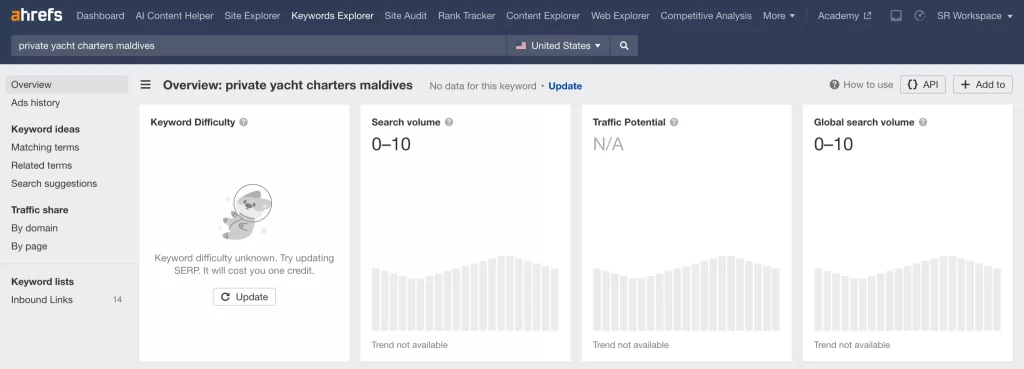
For example, you can see in the above image that “private yacht charter Maldives” only has an estimated 0 to 10 search volume, but it is worth ranking given its conversion potential. A quick look at the ranking pages reveals that some pages rank as competitors' homepages, with few curated lists of private charts and product listing pages.
If your site can create a product listing page targeting these long-tail keywords (much like what you do for an eCommerce SEO) or a roundup page, you’ll have chances of ranking for this type of keyword.
If you’re doing client SEO, starting from a medium-to-high authority is typical when working with luxury travel SEO - as they have acquired passive links and built substantial brand share in their own rights.
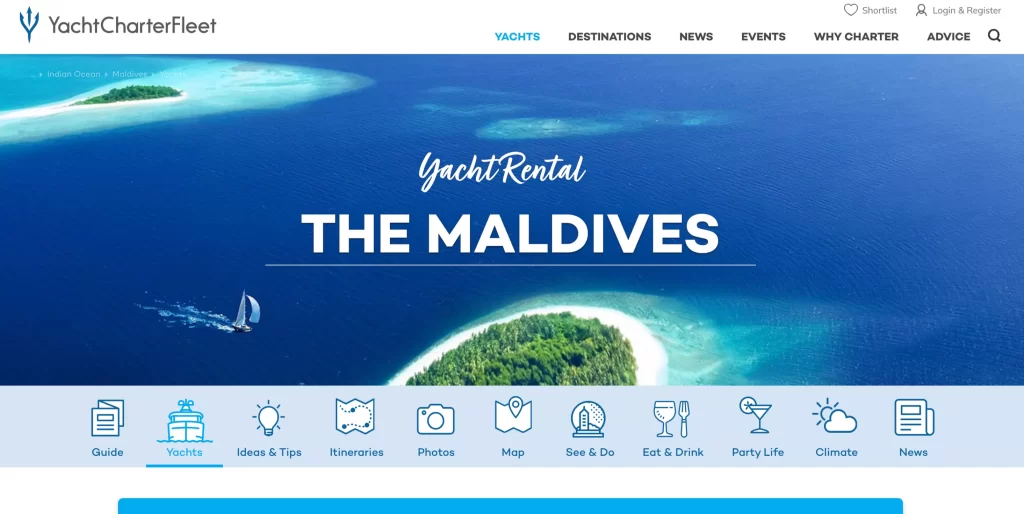
Given that, it’s a good thing to maximize their existing domain authority to quickly rank for long-tail keywords and gain momentum through multiple ranking for variant keywords with topic clusters and dedicated landing pages.
2. Create Content That Resonates with the Luxury Market
Content marketing for luxury travel SEO starts with aligning the brand voice, style, and tone with every content asset you create. You can’t simply create content assets that don’t speak your brand’s language, as this will not represent your client well.
Invest first in understanding your client's business — this will be a cornerstone for navigating the content marketing journey.
Here are examples of content themes you could generate on your site:
- Behind-the-scenes access to luxury destinations, such as private islands or hidden vineyards.
- Profiles of premium services, like Michelin-starred dining or bespoke spa treatments (these could also yield organic traffic if they have dedicated pages to rank for each keyphrase).
- Tailored itineraries for unique travel preferences, such as family-friendly safaris or romantic getaways.
A few good examples are “5 Private Islands in the Caribbean You Can Rent” and “The Travellers’ Guide to Exclusive Culinary Tours in Tuscany.”
Publishing these thematic content helps bring potential customers closer to their purchasing decisions. Balance this informational type well to create a content moat in your niche.
Rank for “Best Luxury [X]” Lists
The pages on the best X lists are among the rankable content types. They not only assist potential customers who are still deciding what solution provider to choose but can also help reveal differentiated products/services in a certain category, helping customers make the ideal choice.
Examples of this are “best luxury hotels in Paris” and “top private safari lodges in Kenya”.
Organically, you should be included in these “best luxury X” lists if you’re the best in a particular area of expertise. If you’re good at what you do, publishers will likely see you best fit to include in their roundups. Usually, it's easy for a niche like luxury travel to determine the best based on reviews, recognitions, and award-giving bodies. Conversely, creating your own roundups is a way to show up in those lists.
Remember that people searching for the best luxury X lists are likely seeking unbiased, curated recommendations. Not beating your competitors is ethical and helps you build brand authority. It also makes your product/service more premium than others on the list, and it’s a matter of how well you showcase the actual value of your offering.
Ranking the best luxury lists can help prepare your site to show up in AI search engines like Gemini and ChatGPT, as most luxury travelers may be using AI search to get quick answers.
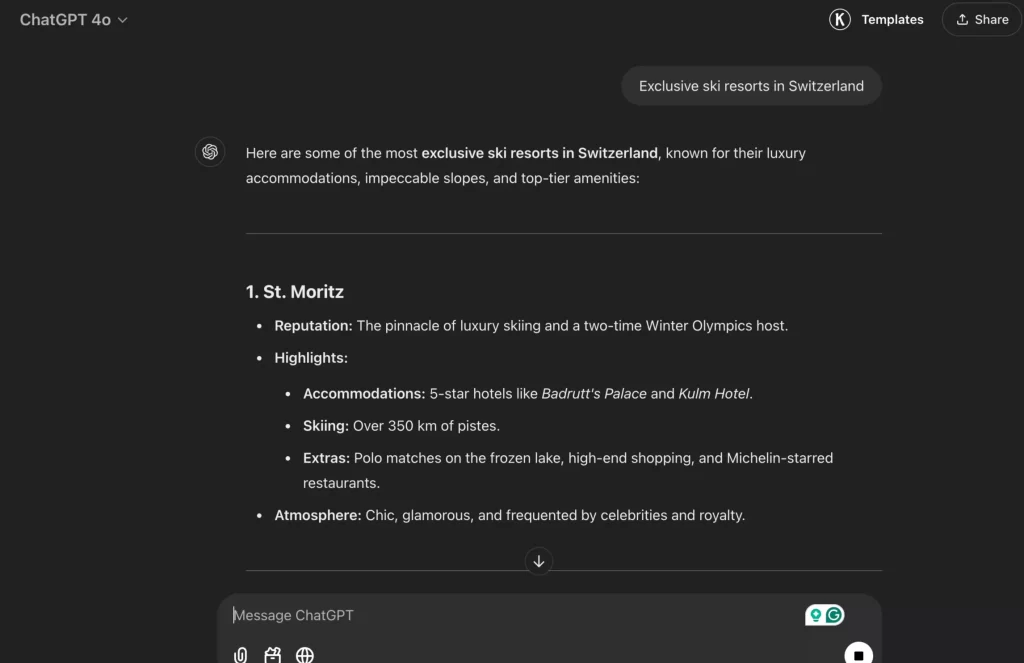
Enhance Copywriting for Affluent Audiences
Copywriting 101 in luxury travel SEO involves addressing customers' pain points, using aspirational language, and providing vivid descriptions. Your copy must serve your HNWI and UHNWI audience.
One way to do that is to highlight exclusivity and prestige (e.g., “Unparalleled privacy and bespoke services designed for your ultimate comfort”). Remember that people at the highest status level want privacy.
In addition, you can input words that evoke sensory imagery (e.g., “Experience the serenity of your private overwater villa with panoramic ocean views”). A more detailed description of what your place looks like or what makes your private charter worth their investment makes it easy for them to see the entire experience (or at least a glimpse).
3. Leverage Enterprise Link Building and Corporate Partnerships
One upside for well-known luxury brands is how easy it is to execute enterprise link building. Being prominent in the offline world makes getting attention (done wisely) easier for creative, linkable assets to attract passive backlinks.
If you’re starting in luxury brand client SEO, use link analysis tools like Ahrefs to examine your site’s backlink profile quickly.
Analyze the pages currently getting the most inbound links and the types of pages linked to (destination pages of the client’s site). This way, you’ll know exactly what’s already working and what’s worth doubling efforts on.
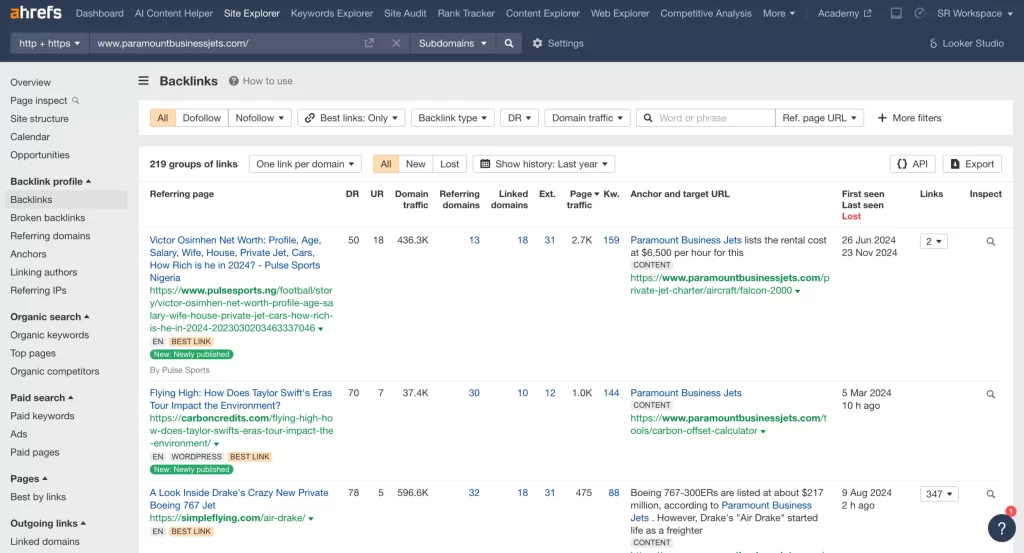
For instance, given the corporate relationships, you’ll find many corporate brands organically linked to your client’s site.
Of the many advantages that luxury companies have, one of my favorites is having strong relationships with powerful, influential, non-competing entities that have monster websites of their own. Leveraging partnerships with them will bring financial breakthroughs and synergy for content marketing and link building. Collaborating on thought leadership campaigns and product placement is a great way to maximize the value of a partnership and enjoy the SEO and branding benefits.
Another way to capture partnership leverage is to write high-utility content pieces for luxury blogs or publications. The social proof accompanied by being a luxury brand (and its association with other entities) makes it easier for your team to pitch publishers (that others in the space don’t get easy access to).
Recognizable Thought Leaders
Thought leaders' advice is constantly sought and rewarded with everything from praise to financial compensation. If you run a luxury travel brand owned by a major enterprise, your company and some of its employees have a good chance of being recognized as thought leaders in your industry.
Leverage thought leadership even more by translating it into content and campaigns to get you more traffic and links. Work closely with product marketing and ask them about hot trends in your business.
Get their thoughts on customer needs and wants. Then, you should be able to list a set of themes and topics that will drive your content and target the right people.
Effective enterprise link builders and content developers can create whitepapers, blog posts, videos, and SlideShare presentations from collaborations between the content team, product marketing teams, product development departments, and your sales force.
Tool Creation
When it comes to linkable assets, we often think of blog posts, infographics, and videos—one of the areas that we need to remember about as a potential link magnet is good functionality. You see, people don’t go online just to find information and to interact with people via social media platforms. We also go online to find solutions to our problems.
One of the easiest ways to provide a solution and, in return, get the right types of backlinks is by providing a tool that users can enjoy on your webpage or download and install right on their devices.
You’ll see several tools in the travel space, such as trip cost estimator, but nothing close to helping high-net-worth clients with luxury travel.
One tool idea that you can make is an interactive tool that allows users to estimate the cost of their dream luxury vacation based on their preferences, such as destination, duration, accommodation level (5-star resorts, private villas, etc.), transportation mode (private jets, first-class flights, yachts), dining preferences (Michelin-starred restaurants, private chefs), and special experiences (hot air balloon rides, safari tours, private island access).
By doing so, you’re creating a unique tool that can earn backlinks your competitors can’t easily replicate with their own link building campaigns.
4. Build High Authority Backlinks with Digital PR
The constraint most link builders and digital PR specialists have is in the story template - what types of stories are aligned to the brand that also resonates highly with top-tier publishers and journalists?
Luxury travel brands have a natural advantage when it comes to digital PR. If you’re working with well-known brands, you must monitor every brand story your company is shelling out to keep building high-authority backlinks to your site.
Here are a few content themes that really work effectively in the digital PR space:
- Experts reveal whether you should [topic]
- The most popular movies to [topic]
- The best [topic] songs
- best/worst/tools [topic]
- [industry] expert explains how often [topic]
- why/why not you should [topic]
Let’s have quick examples. For a private jet brand, here are some ideas we can generate:
- Experts reveal whether you should charter or buy a private jet
- The most popular movies to watch while flying on a private jet
- The best travel songs to play on your private jet
- The worst myths about private jets (debunked by experts)
- Aviation expert explains how often private jets are the best option for business
- Why you should choose a private jet over first-class flights
- The most popular action movies featuring private jets
- The best private jet apps to plan your next trip
- Luxury travel expert explains how often you should fly private instead of commercial
- Why not all private jets are created equal (what you need to know before booking)
- The best luxury lifestyle songs for a private jet playlist
- Sustainability expert explains how often private jets impact the environment
- The most popular movies to inspire your private jet dreams
- Top tools to enhance your private jet experience
- Why you should rent a private jet for special events
- Experts reveal whether private jets are more eco-friendly than commercial flights
- The list goes on, but remember, it all boils down to executing the idea of pitching journalists your content or story.
This ideation tool can help you generate insights for your digital PR campaign.
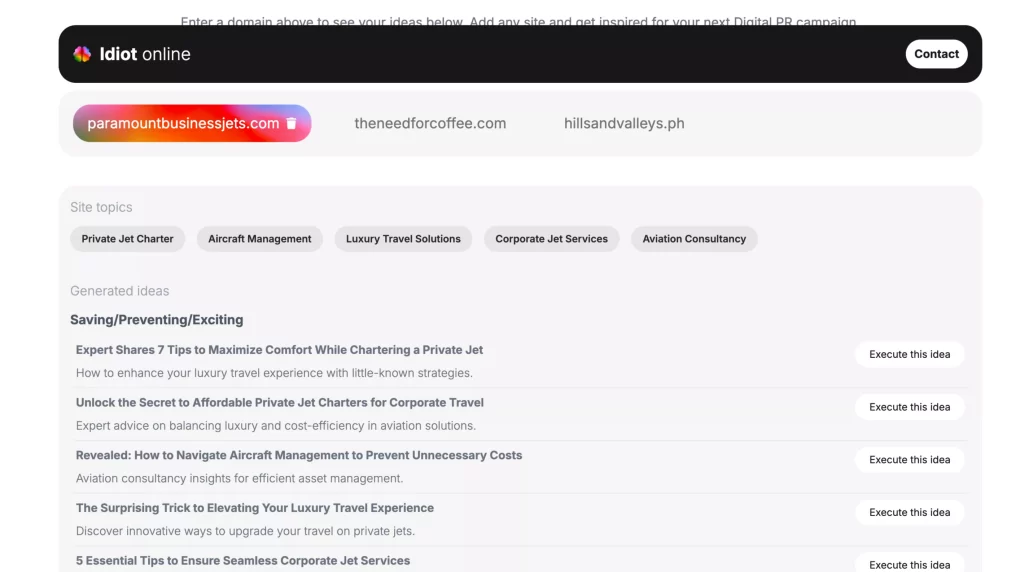
Simply plug in your domain, and it will help generate a list of creative ideas you can start working on best on what you think is relevant and best fit.
Reactive PR with Celebrities
A good majority of affluent clients in the travel niche are celebrities. While confidentiality is essential in a digital PR campaign, you can monitor and react to celebrity news through expert commentaries—we call, “reactive PR”.
Reactive PR, often called newsjacking, is a public relations strategy in which brands or businesses respond in real-time to trending news, events, or public discussions to gain media attention and engage their audience. This approach can immensely speed up the process of obtaining DR or DA90 backlinks, as most publishers are hungry for news stories and additional commentaries during this stage.
However, reactive PR requires speed and creativity. So, you must keep up with the latest news but remain relevant to your client’s brand.
5. Create a Seamless Website UX/UI
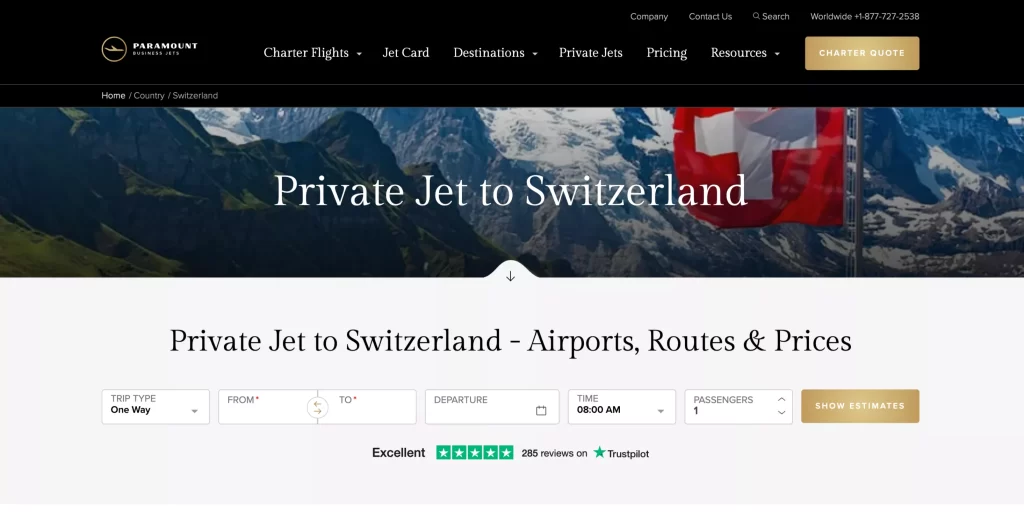
Even the best SEO strategies will only succeed if your website’s user experience meets the expectations of luxury travelers. A poorly designed site undermines the perception of quality and exclusivity.
This is a no-brainer for the luxury travel industry. You want to invest in premium web design that reflects your brand’s luxury ethos through a clean, sophisticated layout, intuitive navigation, high-quality visuals, and interactive features like 360-degree virtual tours.
Your website should be mobile-friendly, as many affluent travelers conduct searches on mobile devices.
6. Hyper-Local Campaigns for Easy Link Building
The local scene in link building is more advantageous in acquiring low-hanging fruits in SEO. The more local your approach to digital PR and other link building strategies, the easier and higher likelihood you’ll increase your site’s ability to get links.
Given that local publications often have less competition for stories and are more likely to cover niche angles, you can tap into different local cities depending on the locations of your target audience.
For example, a “Top 10 Most Luxurious Airports in Europe” campaign can be pitched to local newspapers in cities that house these airports, or a “Best Luxury Cycling Routes in France” could attract interest from French regional travel sites. This approach brings more upsides if you’re a global luxury travel brand, as you can target different cities in different countries (now, having multiple angles you can make for a single story).
You can also check out this guide on how to build backlinks in a very small niche.
Luxury Demands Finesse—So Does Your SEO
You are not dealing with a typical customer, so your luxury travel SEO should reflect the exclusivity and quality of your brand. Accompanying these results are your keyword rankings and higher search conversions.
Implementing these strategies, you will do what your brand deserves and what you hope to be known for in the travel space.
Reddit SEO: How to Rank in SERPs Using Reddit Content?
Reddit is at its all-time high in the ranking for variants of keywords across different industries. We don’t know for sure when it will last, but jumping on this bandwagon is a slightly minimal effort you can make to get some of Google’s real estate for your target keywords.
According to a Wix article, Reddit has officially opened its doors for brands to do business. Being at “the front page of the internet”, Reddit is a hub for in-depth discussions, trusted reviews (assumingly), and niche insights. It becomes an invaluable resource for businesses looking to improve their search rankings.
In this guide, I’ll share actionable tips on leveraging Reddit SEO, whether you’re trying to rank a niche hobby site or a B2B SaaS client.
Use Reddit for Keyword and Topical Research
Reddits’ subreddits are among the best sources for reverse engineering potential keywords in your industry. Given that the intent of users is to look for solutions to their problems or ask for experiential insights into what product/service to choose, the keywords subreddits may be ranking are strong indicators of what actual users search for.
Start by finding subreddits relevant to your niche. You can use Reddit’s search bar, a quick Google search for site:reddit.com [topic], or third-party tools like Keyworddit to uncover active communities.
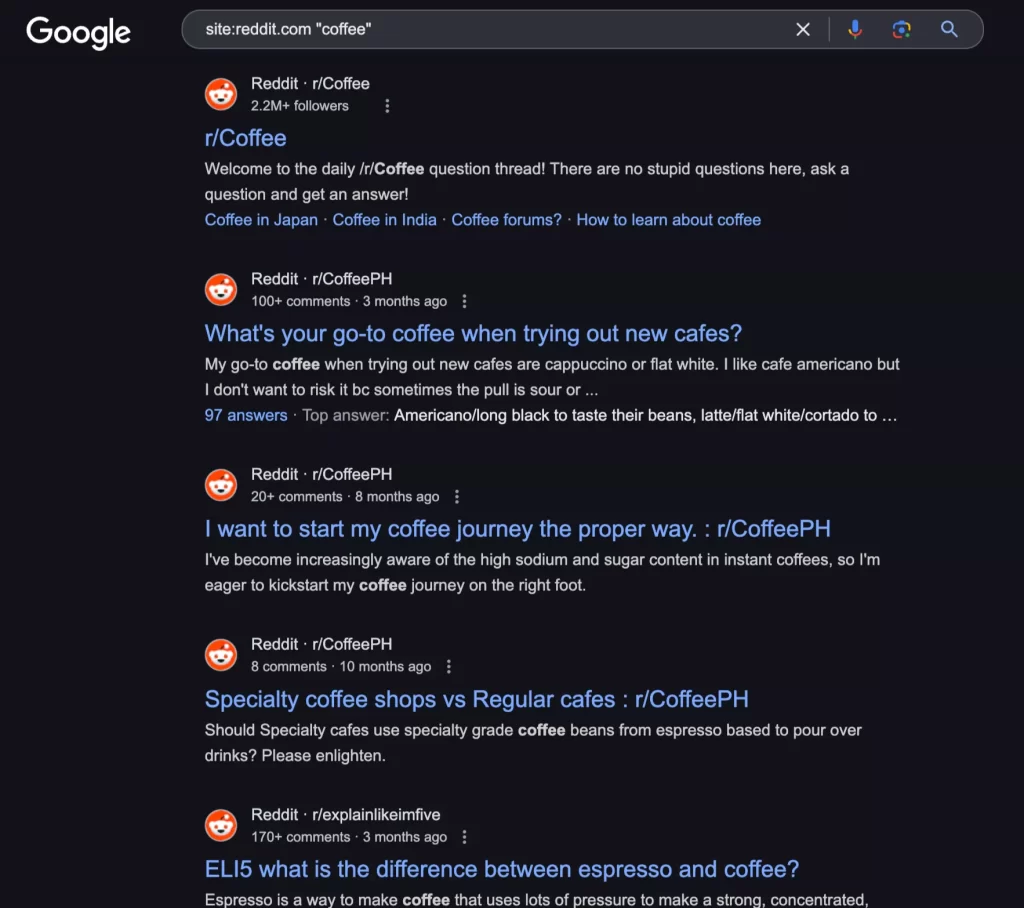
Whichever method you use, the key is to find communities with high user engagement. For instance, if you’re in the finance sector, subreddits like r/PersonalFinance or r/Investing are excellent starting points.
The next step is to dive into threads with high upvotes and engagement to identify trending topics. Focus on the language your target audience uses to frame their questions or problems. For example, a thread titled “What’s the best alternative to Notion for project management?” signals intent and potential long-tail keywords like “Notion alternative”.
Another best way to generate keyword insights from Reddit is to use tools like Ahrefs or SEMRush to analyze the organic keywords driving traffic to Reddit pages.
Here’s a simple process:
- Enter "Reddit.com" into Ahrefs’ site explorer.
- Navigate to the “Organic Keywords” section.
- Filter results using seed keywords from your niche (e.g., “pet food” or “cloud storage” or “coffee franchise”).
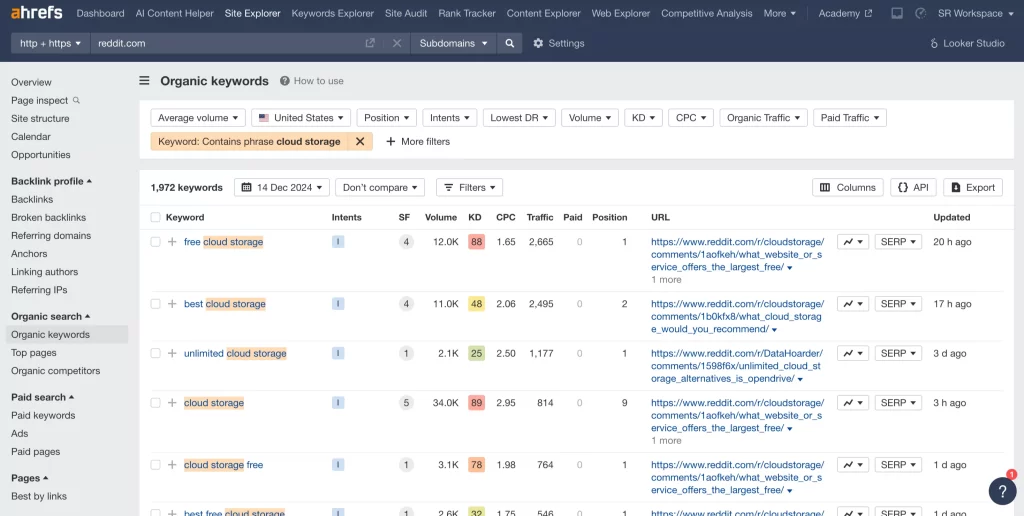
This is useful in uncovering keywords with significant search traffic but with higher conversion potential.
Answer Questions to Solve Problems
The last thing you’ll do on Reddit is self-promote your products/services whenever you want to. This is one of the pitfalls of using Reddit, as Redditors (users and moderators) are quick to downvote or flag overt self-promotion.
The key to succeeding in Reddit content engagement is to focus on providing value without pushing your agenda quickly. When done right, subtle mentions of your brand or product can generate curiosity and brand search volume and can lead to actual organic traffic.


Remember, the context in Reddit is that users visit it to find answers they trust, whether it’s for product recommendations or technical advice. So, having this mindset as the start can become a game-changer in engaging in Reddit.
Here’s how to make the most of this value-adding contribution:
Start with your brand. Your customers (or potential customers) may be asking about anything about your products/services (features, benefits, results, comparison, etc.). Answering specific questions from your potential customers can help you overcome their objections and let them make a purchasing decision.
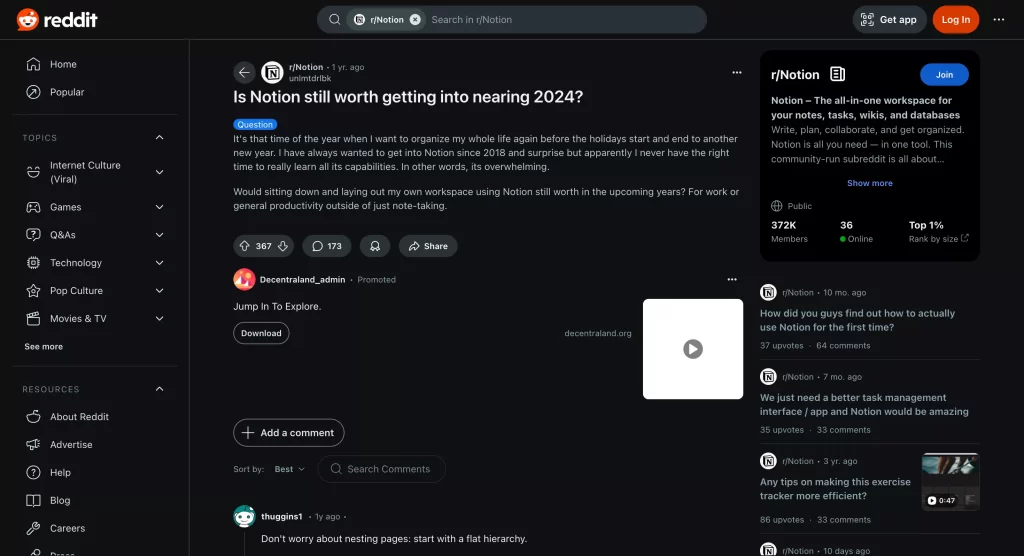
Do it with finesse, as you don’t want to overhype your answers. Answer truthfully by tackling the angles of your product offering at which you’re best. This can also help you strategize positioning your product’s POV in your link building campaigns.
Focus on intent: Engage with questions directly tied to your industry or expertise. For example, in SaaS, a question about the best task management software could lead to an opportunity to discuss the features and benefits of a product your brand offers. You may expand your content theme as long as it is within your industry.
By thinking of the ‘why’ users are asking these questions, you’ll deliver the answer in a way that addresses their pain points.
Comprehensive answers: Posts that provide detailed, helpful answers are more likely to be upvoted and indexed by search engines. For example, a well-written response on r/PhInvest addressing the pros and cons of coffee franchise investments could rank highly on Google.
The comprehensiveness of answers doesn’t mean lengthy ones. It could be concise as long as you answer the question right. Similar to how you create and publish helpful content for search, it’s the same mentality you have with Reddit insights.
Increase Brand Search. It’s one of the upsides of answering questions on Reddit, as it helps increase curiosity and naturally encourages users to search for your brand on Google. As you know, getting more brand visibility helps your website's overall rankings, given that they favor more brands today than ever (and in 2025, as one of the SEO predictions by top SEO experts).
Bring Expertise to Reddit
EEAT isn’t just a myth. It can help you climb your pages in Google’s SERPs and establish authority and thought leadership in your space.
Imagine seeing your brand as a source of consistent, value-driven answers. You’re increasing your chances for more brand visibility (search volume, as mentioned earlier) and assisting in future collaboration with other publishers and content creators in your industry.
Here’s how to bring EEAT to Reddit:
Make in-house experts involved in content promotion. You don’t have to hire outside collaborators (you may do so if it’s possible with resources), but you can start with tenured people in your organization.
Given that SEO today requires collaboration between many departments (and not just marketing), partnerships with product management, research and development, and the management team help you acquire first-hand knowledge and experience you can leverage to answer Reddit questions.
Email your in-house experts with industry-related questions and answer Reddit threads with your account. Explain why they need to do so to get more buy-in for your initiatives. This could also helpful you in other link building strategies such as niche edits and digital PR campaigns.
Another way to bring expertise to Reddit is to back up your claims with statistics, studies, or personal experience. If you have internal data, surveys, or industry reports that are helpful to the community, link to any of those pages in your Reddit answer. It’s a good way to promote your brand without overtly self-promoting it.
Track Competitors and Market Sentiment
As a multi-industry entrepreneur, tracking competitors' and customers' feelings about their offerings is a silver-lining strategy. You get to observe discussions about your competitors, gauge the market sentiment, and uncover pain points or needs unmet by their brands.
Threads like “[Competitor] Is it worth it?” can give you insights into customer opinions and concerns. You can incorporate these points into the customer-centric copy on your blog content and landing pages, increasing conversion rates.
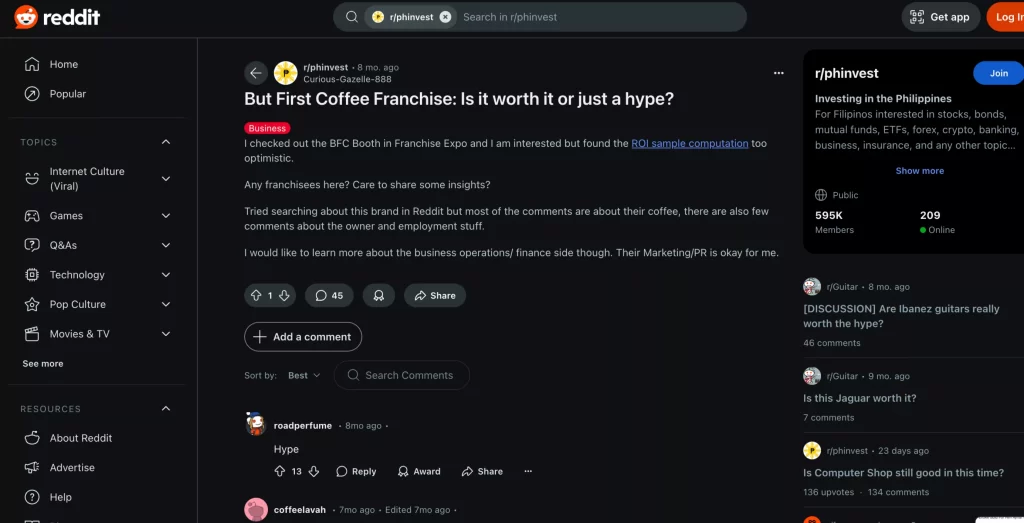
It’s also a good way to publish blog content for questions that may not have significant search volume (or zero search) but are likely getting interest from your target audience. I got this from Koray Tugberk, who said publishing zero search volume with high interest in the offline world can increase your domain's topical authority.
Include Reddit in Your Blog Ideation Strategy
In the SEO world, we’ve got dynamic keyword research strategies from reverse engineering competitors or topical map creation using Ahrefs or SEMRush.
On one side, you can actually utilize Reddit to flesh out new blog ideas straight from ranking subreddits.
Begin by plugging Reddit (or a specific subreddit) into Ahrefs or SEMRush. Then, analyze the organic keywords for which these pages rank.
You can filter to match significant search volume (say 100<) and tie it to your current site authority to choose keywords for keyword difficulty. For instance, if you have a DR50+ site, you can select keywords with medium competition, as you’ll have chances of competing, given your domain authority.
Whenever you run out of techniques, it could be a good practice to use Reddit’s keyword research strategy.
Another upside of incorporating Reddit into your blog strategy is thinking of upgrading content formats with questions from Reddit. This helps improve the page’s EEAT quality and its ability to attract passive backlinks, as you provide more first-hand experience and original expertise to the subject discourse - assuming you provide the best answers possible to those questions.
Real Estate Domination on Google
Given that Reddit ranks for many keyword variants in different industries, you’ll have an opportunity to appear in several threads, apart from your ability to rank for your target head terms with your web pages.
Today, ranking on multiple list pages and community pages (including subreddits) is more important than ever for increasing brand visibility.
SEO Retainer Guide: À La Carte or Full-Scale Link Building?
Do you need SEO every month?
Short answer: Yes.
Long Answer: You need consistent SEO work required to adapt and sustain results. And even if you’ve maintained top search rankings for your head terms, there’s still room for growth for any type of business.
SEO retainer is a service agreement where an agency or consultant provides ongoing SEO support and implementation for a monthly fee.
I’ve seen marketing agencies and companies realize more today than before how continuous work is necessary to sustain SEO results, given the ever-changing search landscape, surprising core and other Google algorithm updates, and new players in every industry trying to dominate Google’s SERPs.
Of course, getting buy-in from in-house stakeholders (Head of SEO, marketing manager, and VPs of Marketing) requires arm chests and tools of persuasion, managing expectations, and in-depth expertise of your offer.
But compared to years ago, selling and hiring agencies for monthly SEO retainers who can do the job is much simpler.
In this guide, I won’t cover full-packaged SEO retainers, which includes technical SEO, on-page SEO audit, content asset creation, analysis, and reporting. Still, I’ll go deep into one essential SEO retainer facet: link building retainers.
The Value of Link Building Retainers
You’ve seen this everywhere—link building agencies selling one-time-off packages, a few to a couple of links in a single project, with guarantees of quick results. In a nutshell, it’s like link building - selling pancakes.
While it’s true that there are certain times when link building is needed or when having few links to certain pages boosts their individual rankings, treating link building like quick magic for your website is not a good thing.
For the most part, competitive brands still engage in long-term link building, as they see it not just as another SEO activity but as part of a robust branding campaign.
Viewing link building from a sustainable perspective keeps your focus on creating a flywheel effect on your search traffic as you see incremental (and even exponential) impact on one of your pages and on the total link equity and brand strength of your website.
À La Carte vs. Full Link Building Retainers: What’s Typically Included?
If you’re looking to hire a link building agency or consultant, you’ll probably choose between these two types of link building retainers: à la carte and full link-building retainer.
À La Carte Link Building Services
This type of monthly retainer allows clients to purchase specific link building services or packages at the pace of their needs. It’s usually a one-time or occasional purchase, ideal for businesses with very limited budgets.
If you’re getting à la carte link building service, you should have a particular link quantity and quality in mind—the number of links and predefined metrics for links (e.g., Ahrefs DR30+, Majestic Trust Flow 25..), as well as the type of links, whether it’s a guest post, niche edits, local citations, or a few foundational links.
In this case, the client specifies the pages and target keywords the links should support. The link building agency must provide all this information, and at the end of the timeframe agreed to deliver, it would show up on reports, including the exact link placement for verification.
A very straightforward way to purchase a service. You’ll have full control over the preferences of both the quantity and quality of links you want to build.
However, the downside of an à la carte link building service is the lack of ongoing strategy and optimization. As you’ll only get plain deliverables of links, you can’t expect the link building agency you’re partnering with to provide you with the next optimization efforts. In other words, you only get the execution part, not the strategy service.
This requires you to fully strategize the more granular details of your link building campaign, aligning it with your entire SEO campaign before hiring an à la carte link building agency.
I won’t recommend this type of service if you don’t have a solid running SEO team and an SEO strategy at the start. You may be building tons of links, but if they don’t align and integrate well with your top-eye-view SEO strategy, they will only make a minimal impact.
Another drawback of getting à la carte link building services is the minimal support you can expect from an agency or consultant. It’s a piece-by-piece type of work where service providers hand over a list of live links, and that’s pretty much what you can expect from them.
Full Link Building Retainers
Full-scale link building retainers involve comprehensive strategy development and execution to manage the entire link acquisition process.
If you’ve been doing link building, you know that it involves link strategy development, link research (link prospecting), link qualification and approval, content creation, and outreach campaign development —all of which are critical to the success of the backlink campaign.
Partnering with full link building retainers isn’t cheap. After all, the immense value you’ll get is hands-off tasks from strategy to execution, which require hours of time and mind work to execute correctly.
This type of link building retainer is more appealing than à la carte retainers, as it includes a free consultation in addition to the link building package itself.
For example, SharpRocket is a full-scale link building retainer covering everything from strategy development to relationship management. In detail, we start with competitor backlink analysis and link gap analysis to see how many quality links we have to build to dominate the top 3 spots for your target keywords (assuming we already have target pages to build links to).
Then, we determine the appropriate link types for the client’s business. If it’s a local client, we focus on local links and citations. If it’s a B2B SaaS, we focus on tech and other vertically related links, publishing, and news sites.
Other agencies build generic, one-size-fits-all links to all their clients - which diminishes the link value. Remember that certain link types have been working effectively for the ranking sites. You just need to figure out what those are and how to incorporate them into your link building campaign.
You can check out our link building services to learn more about how full-scale link building services work.
The best thing about hiring full-scale link building retainers is the trust you can build upon the agency’s expertise and processes. From their years (even decades) of SEO experience, they’ve dealt with different industries and types of clients, and they could identify similar patterns that could work for your website - customizing the entire strategy and execution so you can gain top-of-the-bar results.
Hiring a full-scale link building agency is beneficial from both financial and relationship perspectives for big agencies and enterprise link building campaigns. Given that it takes 6 or 12 months to onboard a new service provider, having someone continue doing the link building work could adjust to the agile movements of the SEO campaign.
How to Choose the Right SEO (Link Building) Retainer
1. Evaluate Their Backlink Profile
It’s easy for an agency to say they’re building high-quality backlinks, but unless you see what kind of quality they’re talking about, you shouldn’t rely on their lip service.
One way to examine this even before inquiring about their services is to look at their agency’s site backlink profile.
If you have link analysis tools like Ahrefs, simply plug in their agency website and have a quick assessment of their current link profile. See what types of backlinks they’re building. Are the links mostly organic or paid? Do they build editorial or contextual backlinks? From which industry do they focus on link acquisition? Is it relevant to the market?
Obviously, this isn’t 100% perfect criteria for determining whether they’re the right fit. But if they know how to grow their own SEO agency by building more quality links to their agency website, it definitely attests to how well they can take care of you as their prospective client - for the least part.
2. Ask For Samples of Links and Social Proofs
I’ve observed this a common request from prospective clients in our UK link-building agency—they usually request samples of links and clients we’ve worked with (ones we can disclose to the public).
The reason is plain simple. If they can provide you with the exact link placements they acquired for a specific client, you could tangibly assess their link types and quality. And it should be based on either topical relevance, link metrics (e.g., Ahrefs DR30+), trust, and thematic flow.
It would be a plus, of course, if they could show you case studies from clients within your industry, as the types of links they would typically tackle would be similar to yours.
When it comes to social proof, be careful. Some case studies of ther agencies are copy-cat or plain screenshots of organic traffic reports using SEO tools like Ahrefs or SEMRush. They don’t mind getting other agencies’ social proof.
3. Understand How They Measure Results
Like any other SEO campaign (and any business initiative), you should measure results. Evaluating progress (or regress) helps marketers improve their work through adjustments.
When you meet with your prospective SEO link building retainer, confirm they could align their work with your SEO and business objectives. Ask, what types of metrics do they look at? Will they provide performance reports?
These questions help you understand their exact deliverables and approach to link building. If it’s all about links to rankings without consideration of how your brand will be perceived in the market, think through it.
4. Ask Who Will Handle Your Account
It’s a nightmare for companies to see SEO agencies today only working directly with account managers. That’s not to say it’s not a good communication model and way of collaboration for both parties.
However, if you can speak and work directly with both an account manager and SEO strategies or are fortunate enough to even talk to the CEO who does the strategy work, who will relay the progress of your campaign, you will have more confidence and trust in the results you can expect from them.
5. Relay Confidentiality (If Applicable)
If you work for big corporations with strict branding and legal requirements, remember to tell your partnered link building agency about these. They should be aware of any confidentiality concerns before the link building campaign even starts.
This way, you avoid running issues in sharing data that shouldn’t be disclosed as the campaign runs.
Make The Right Choice For SEO (Link Building) Retainers
These tips will increase your chances of partnering with the correct link building agency or consultant for monthly link building retainers. As every investment needs to see ROI, deciding on your non-negotiables is critical when picking the right outsourcing firm for your business.
SEO for the Google Maps Pack: Rank Better Locally
The Google Maps Pack occupies prime real estate on search results pages. It gets more clicks than your site will receive from ranking top spots for local organic search listings, making it an imperative area of local search optimization that marketers must take advantage of.
Even if you rank #1 for organic search listings, it’s still an excellent addition to your arsenal to dominate Google Maps Pack.
I’ve used it to rank one of my local businesses—a coffee shop in Bulacan and our franchise in Taguig—and have been driving nearby customers, making it one of the important channels to drive more physical visits to our stores.
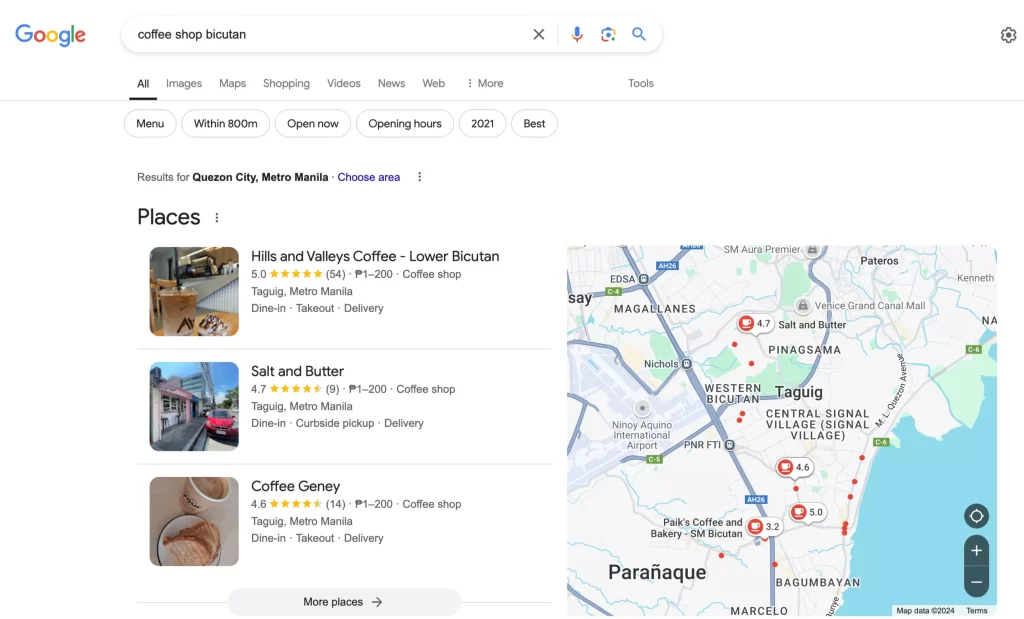
Here are some tips for leveraging SEO for the Google Maps Pack.
1. Claim Your Google Business Profile (GBP)
If your brand is famous in the industry and many customers visit your location, you may have a Google Business Profile visible on a search. You just need to claim it as its rightful owner.
Otherwise, if the store hasn’t opened yet, like in our case, weeks before our store opening, we already created our Google Business Profile for our upcoming branch.
Simply go to the Google Business Profile and follow the verification process. They usually will send you a code by mail or phone. Once verified, you can edit your Google Business Profile and optimize it for local searches.
Once you have claimed your Google Business Profile, fill out all the necessary details, including your Business Name, Address, and Phone Number. Spend as much time as necessary adding other important details in every information field.
The goal here is to provide as much context about your business as possible for Google to recognize it and to provide business information for your potential visitors.
2. Ask for Customer Reviews
Getting legitimate customer reviews helps Google recognize the authenticity of your brand and gives potential customers a glimpse of your business’s customer experience.
Whether the reviews are positive or negative, what matters most are actual reviews from your customers.
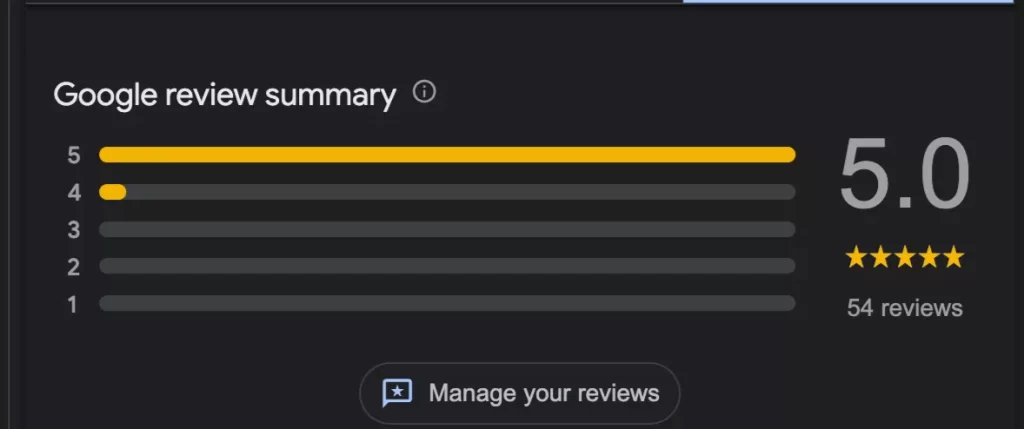
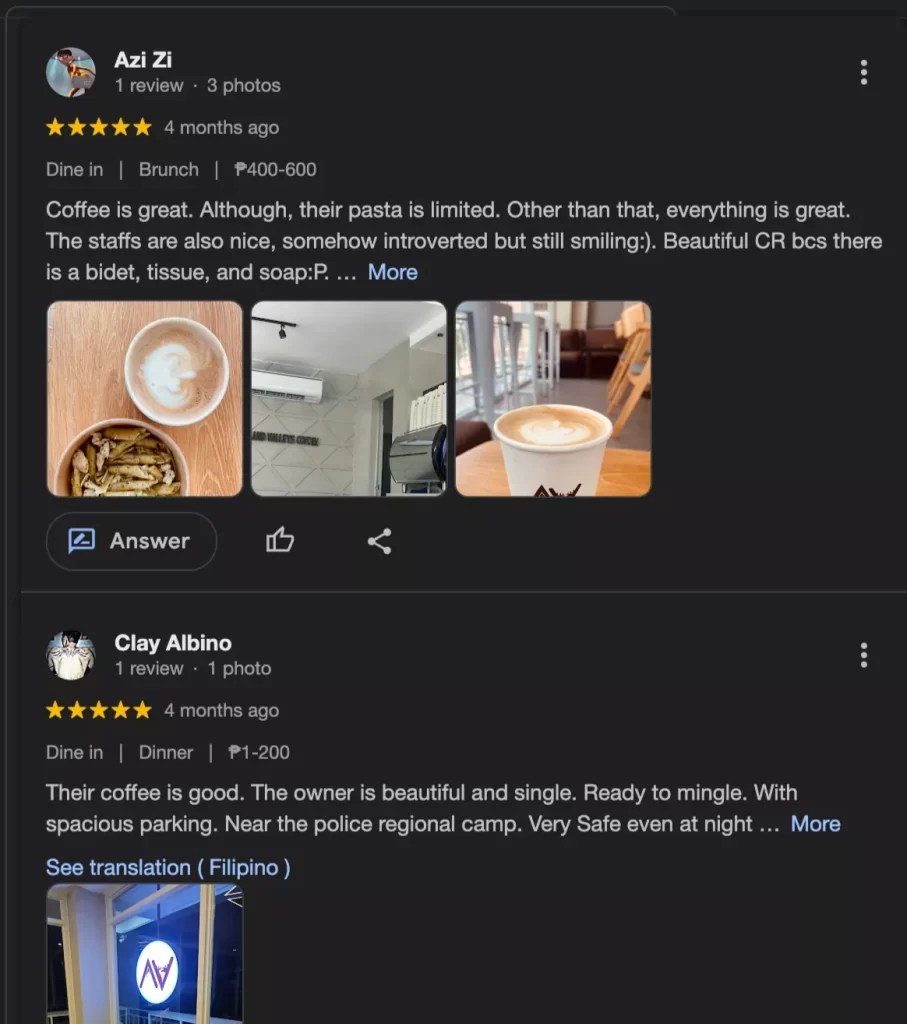
Here’s how to encourage customers to review your GBP:
Politely ask customers for reviews after a sale or service. Train your front liners (customer service or sales team) to request a GBP review from every satisfied customer. It doesn’t hurt to ask.
Send follow-up emails or texts with a direct link to your GBP review page. This could be through Viber or any other digital channel.
Another effective way to get reviews is incentivizing customers to review your product or service. For instance, during my honeymoon with my wife, we had a relaxing spa in Bangkok, Thailand. After the spa service, we were asked to scan a QR code, incentivizing us for the review - getting 50% off for the next visit.
You can also apply the same strategy to acquire new reviews for your GBP. Display signs in your physical location, encouraging people to give feedback.
Pro Tip: Respond to every review, whether positive or negative. This shows engagement and increases trust signals with future customers, showing you value every customer experience.
3. Choose the Primary Category That Aligns With What Customers Search
Google allows you to select a primary category and up to 9 secondary categories. Choosing the right primary category will enable you to appear first on Google Map Packs for specific search queries.
For instance, if you own a Bakery, choose “Bakery” over “Restaurant.” Match your primary category to your business’s core offerings.
Next, the second categories allow you to target additional search queries. For example, in the given bakery example, you could add “Catering” or “Dessert shop” as secondary categories to broaden your reach, enabling you to dominate Google Map Packs for any of those search queries.
4. Achieve NAP Consistency
NAP consistency refers to having the same Name, Address, and Phone Number across all online platforms and websites. Getting this right helps build your business's legitimacy in the eyes of Google.
By using tools like BrightLocal, you can automate monitoring of NAP across local citations and directories, helping you edit those profiles to match your business's exact NAP.
5. Get Local Citations
Part of doing link building for local sites is getting as many local citations as possible for your website. Create business profiles on Yellow Pages, LinkedIn, Yelp, and local business directories, as well as social media profiles such as Meta Page and LinkedIn Page.
Make sure NAP is also consistent across these local profiles.
You can use Whitespark to find more citation opportunities and manage the consistency of NAP details across these platforms.
6. Publish Localized Content
Increase the frequency and quality of localized content you publish on your site. Targeting localized keywords (e.g., "coffee shop in Bulacan") can help you dominate in more localized rankings.
Part of localized publishing is the ability to use local language and references that resonate well with your audience. So, for instance, if you want to write an article about “Top Coffee Shops in Manila,” you must include the specific places and addresses of these coffee stores while giving people exact directions.
If you ever visit the place, you may also recommend your favorite beverages. Adding personal insights and experiences could increase user engagement and enhance the helpfulness of your content.
7. Set Driving Locations to Your Business Address
Set driving directions to your business on Google Maps to make it easy for customers to find you. This is an underrated technique for climbing rankings on Google Map Packs.
As your potential customers use the directions on Google Maps, it generates positive signals for your GBP listing and improves more of its visibility.
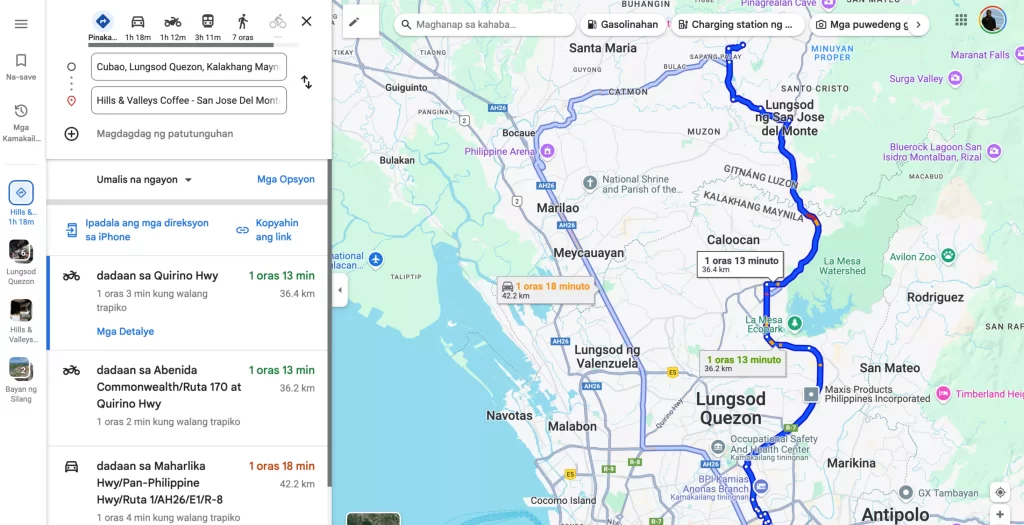
How to promote driving directions:
- Share your location links on social media. Include it when you’re writing captions to entice your followers to use Google Maps when finding directions to your store.
- Include your Google Maps and Waze links in email campaigns.
- Add “Find Us on Google Maps” to your website. Make it visible on the homepage, footer, or header.
8. Get More Engagements With Photos
Legitimate businesses have actual photos of their physical store, of their customers, and of their customer experience.
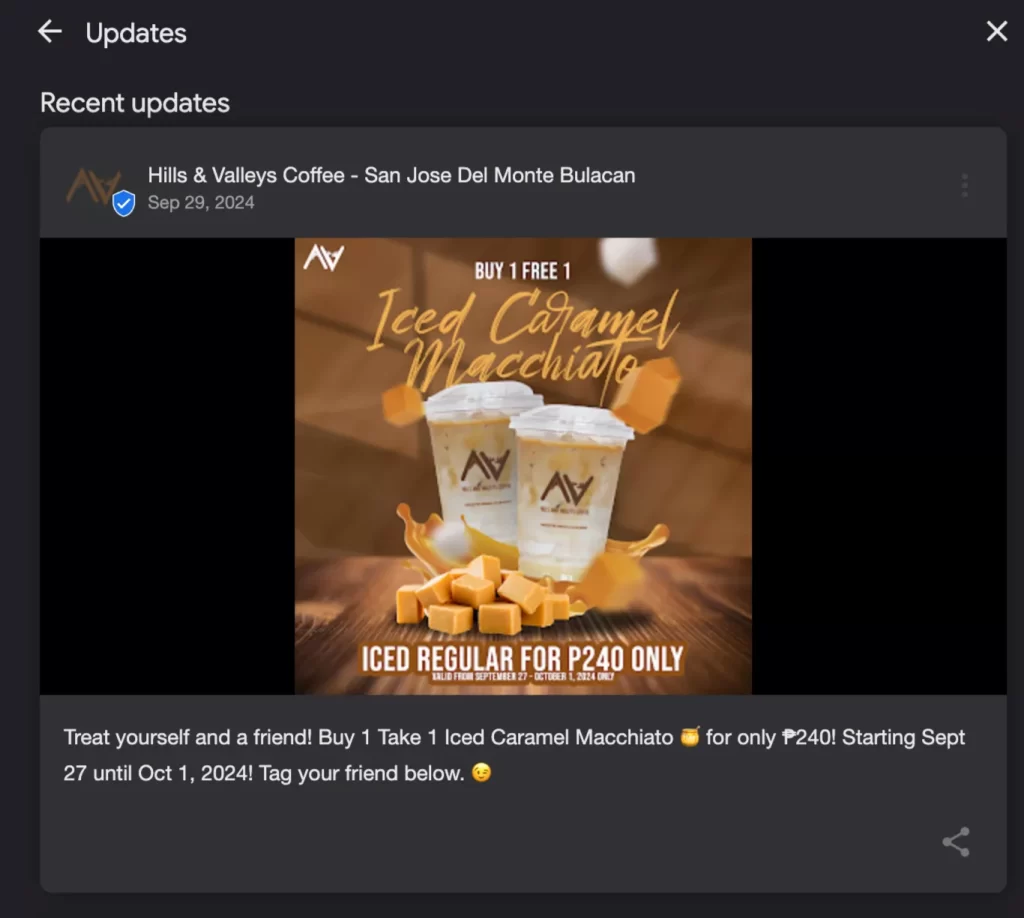
Upload images of your store, products, and team regularly to your Google Business Profile. You can also use geotagged photos to improve location relevance.
Tip: Ask your front-line staff to encourage customers to upload photos and reviews to your profile after visiting your business.
9. Infuse Attributes: Highlight Your Business’s Key Details
Attributes include features like wheelchair accessibility, vegetarian options, kid-friendly environments, and outdoor seating. These help your customers make the purchase decision, as they have nuances and preferences before visiting a store. For example, some customers would want to know if they can bring their pets to the store (so keyphrases like “pet friendly coffee shop” would be more likely their search keywords).
Navigate to the “Info” section in your GBP and select applicable attributes. Highlighting attributes not only improves your profile’s completeness but also appeals to niche audiences with a variety of preferences.
10. Upload New Offers to Your GBP
Regularly updating your Google Business Profile with offers and promotions keeps it dynamic and engaging.
For instance, we upload limited-time discounts, seasonal sales, and new product launches to our Google Business Profile at Hills & Valleys Cafe.
It is suitable for local rankings and keeps our existing customers updated with our latest store campaigns, which would keep them visiting more often.
Be Intentional in Ranking Your Google Maps Pack
Maintaining a Google Business Profile may be an underrated strategy for some, but if taken seriously, it could drive more search visibility and foot traffic to your stores.
As more people use Google to search for nearby stores for their daily needs, you’ll likely attract new customers organically if you rank for Google Maps Pack, without spending a single dime on advertising.
B2B SEO: Simplified Guide to Better Rankings
B2B companies are increasing their budgets and investing heavily in SEO and content strategy like never before.
In fact, if you run an SEO agency, B2B SEO is one of the most lucrative types of campaigns you can deal with, as the few leads they acquire from search correspond to their monthly SEO investment.
Consider one client closed for a commercial solar panel worth thousands of dollars—a few clients of this sort justify their investment in SEO.
While most SEOs are familiar with running B2C SEO campaigns targeted at regular consumers (e.g., eCommerce SEO), B2B SEO has many nuances in its decision-making process and customer journey, which are both critical to developing the right SEO strategy and link building.
Why B2B SEO Requires a Unique Approach?
Lower Search Volumes, Higher Traffic Value
Unlike B2C markets, B2B keywords often attract lower search volumes.
However, these keywords represent users further along the buying journey and are ready to make high-value decisions.
For instance, consider the traffic value for this specific keyword, “commercial solar panel installation,” at $6.7K (not to mention the traffic value of its other keyword variants).
Longer Sales Cycles
B2B buyers typically go through extended research and evaluation phases. So, your SEO strategy must support users throughout the funnel—from initial awareness to final purchase decisions.
You can’t simply rely on typical keyword research. You have to map out the entire buyer cycle for stakeholders and the keywords they may be searching for, depending on their current roles.
Multiple Stakeholders
B2B decisions involve a variety of roles and perspectives.
Creating content that addresses the needs of different stakeholders—decision messengers, influencers, and decision-makers—ensures relevance and increases the chances of conversion.
Unlike B2C, where you target individual consumers, B2B SEO involves a variety of roles. Therefore, expanding your reach with your content strategy would be crucial in significantly increasing search traffic and conversions.
Now, let’s take a look at key fundamentals in B2B SEO.
1. Understand the Business, Stakeholders, and Decision Makers
You can’t start any B2B SEO campaign without knowing the intricacies of the client’s business you’re serving with. Effective B2B SEO begins with understanding the client’s business and the key players in the buying process.
As mentioned earlier, unlike B2C decisions that may involve a single buyer, B2B purchases require collaboration between multiple roles, including decision messengers, influencers, and final decision-makers.
Let me give you tips on how to develop a deeper understanding of your client’s business:
Conduct Consultations and Meetings
Start by meeting with internal subject matter experts (SMEs) and product managers of the client’s company. Discussions with them will provide insights into the business’s goals, products, and unique selling points. They can also help you gather information about the typical customer base and their challenges.
You can develop worksheets to organize data and information as you accumulate them during your consultation. This approach is not one-time meetings but consistent consultations to better understand their client base, product offerings, and how search could help them acquire new leads.
Beyond keyword research, you should go exactly to the points of your client’s target market. This will later translate into a better content strategy and format for the blog, which you will strategically publish.
Listen to Sales Calls and Review Proposals
Sales calls and proposals are rich sources of industry-specific jargon and standard terms potential buyers use. Familiarizing yourself with this language ensures your content resonates with its target audience and meets their expectations.
I recommend this highly when you’re doing SEO for B2B SaaS, where the majority of the sales activities are done in calls and software presentations. Recording these sales calls, assessing them, and seeing patterns better can help you craft your messaging on your content assets.
You can use AI tools such as Fireflies.ai, which we maximize in our sales calls at Rainmakers. It integrates directly with Zoom and summarizes the meeting, giving me actionable items and important notes during the meeting.
Review New-Hire Onboarding Materials
New-hire onboarding materials often include valuable overviews of the company, its products, and its market position. These resources can also clarify the product’s features and benefits, key messaging points, and buyer personas. If the client can provide this, it would add insights to your B2B SEO campaign.
Get a Demo Walkthrough
Request a demo walkthrough of the product or software. This hands-on experience is critical for understanding how the product works, who uses it, and the problems it solves.
Similar to what I’ve mentioned earlier, these demo walkthroughs can deepen your understanding of the client’s business by giving you a feel for the emotions, reactions, questions, and actual conversations with their existing clients (this later helps in crafting content for the intent, evaluation, and buy stages of the B2B sales cycle).
Understand Key Decision Makers
In B2B buying processes, roles are segmented into:
- Awareness and Interest Stage: Tactical-level employees and field operators who act as decision messengers.
- Consideration Stage: Mid-level managers who influence purchasing decisions and provide recommendations.
- Intent and Evaluation Stage: Senior executives or department heads who make the final call.
Understanding who holds the most influence at each stage is critical for crafting content that speaks to their unique needs.
For instance, my corporate training company usually deals with HR and Learning and Development practitioners at different rank levels. Then, align each role at each buyer stage.
To give you an example, here’s what key decision-makers look like at each stage:
- Awareness and Interest Stage: HR Assistants, Training Coordinators, and HR Generalists
- Consideration Stage: HR Managers, Learning and Development (L&D) Managers, and Talent Development Specialists
- Intent and Evaluation Stage: Chief Human Resources Officer (CHRO), Vice President of HR, and Training and Development Director
Map Out Keywords To Key Decision Roles
The tangible output from identifying key decision roles is a mapped-out keyword plan these critical people of your client’s target market are searching for.
Below is an example of the different sets of keywords these roles are using to find solutions in the corporate training industry:
You’ll notice an interesting pattern here. For example, in the Awareness and Interest stage, HR assistants and the like are directly looking for specific solutions—corporate training providers—given that their tasks are mainly to find potential training providers based on certain qualifications.
As you move below the buyer stage (Intent and Evaluation Stage), key roles, such as the VP of HR or Training and Development Director, are more interested in the business impact of a training program—at most, all C-Suite and top management-level roles consider the significant impact of any activity on the organization's bottom line.
As roles move up the ladder, they change their search queries based on the context of their work.
Prioritize Keywords Based on a Deep Understanding Of The Stakeholders’ Decision-Making Process
Having a limited budget and resources for B2B SEO campaigns requires strategizing a content campaign that will best yield a quick return (low-hanging fruit SEO strategy).
So, instead of mapping out your content calendar every keyword in each buyer stage and publishing content around all of them. It’s a better use of resources to think first about which decision roles best or highly influence the decision-making process.
This is a case-to-case basis, from industry-to-industry and business-to-business assessment, so having a deep understanding of your client’s business is crucial here.
For instance, in my earlier example of hiring a corporate training provider, most of the decisions come from the lower ranks to mid-level management. After the HR assistant qualifies the list of potential solution providers, they only need a few more approvals to decide. Most of the bulk work and must-be focus of the SEO campaign should target the Awareness and Interest Stage.
Given my limited budget and resources for this B2B SEO campaign, 80% of my content strategy focuses on publishing all landing pages related to training and any of its keyword variations, and 20% goes to publishing content assets for the Consideration Stage (e.g., corporate training prices, leadership training strategies, and other strategy-level keyphrases).
The main idea here is simple - truly understand your client’s business and how their target market’s roles think, approve, and decide who they think is the best solution provider for their needs.
2. Include Purchase Decision Support for Product-Led Linkable Assets
Some SEO practitioners play B2B link building and content asset creation similar to how they approach link building for B2C sites.
While there are similarities, you have to understand that most successful linkable assets of B2B sites are directly tied to the purchase decision process of their target markets and are not only published for the sake of links.
Aligning purchase decision support to content assets is a powerful way to drive B2B leads, as these assets provide potential buyers with the information they need to evaluate and choose a product or service confidently. In justifying decisions to stakeholders of target clients, purchase-decision support assets are one of the best examples of a product-led link building campaign.
Opt for stakeholder consideration when publishing linkable assets. For instance, you can’t just create an “Ultimate Guide to Project Management” without first understanding whose persona and key roles to target (go back to the first tip of this guide).
Consider what, who, and why a specific persona must care about your linkable asset. By doing so, you’ll hit two birds with one stone - links due to quality content and additional leads, as the page assists in the buying decision process.
Here are some examples of purchase-decision support assets:
- Comparison Guides: Highlight the differences between products or solutions.
- Case Studies: Showcase how similar businesses have benefited from the product.
- Interactive Tools: Create calculators or ROI estimators that help buyers assess potential outcomes.
3. Strategic Link Prospecting
Link prospecting for B2B SEO can be challenging, as fewer publishers may be available in your space. If you go after highly relevant prospect sites for links, you’ll likely run out of opportunities.
B2B link building requires a strategic approach for the right types of backlinks, where you can explore adjacent industries and niches that align with the client’s offerings.
This guide by Glen Dimaandal of SearchWorks shows the degrees of relevance, which you can incorporate into your link acquisition campaign. This will give you insights into the types of audiences you can target for links.
Expand Link Lists with Active Brands
One of the best ways to expand your link prospect lists for B2B SEO campaigns is to partner with other non-competing brands that are highly engaged in link building.
For instance, this happens mostly with B2B SaaS, where in-house marketers send cold outreach emails to collaborate on content. Source out active brands and publishers and engage for future link opportunities.
Join legitimate discussion groups in your industry and digital marketing space. You can exchange contacts and allow reciprocal linking (done correctly) to acquire links further.
Collaborate With Clients
Leverage insights from consultations and product demos (as discussed in tip #1) to identify industries, publications, and websites that resonate with the client’s audience.
Not only does it make your link building more relevant and effective, but it’s also much easier to contact publishers with whom your client already has an established relationship. Familiarity with email outreach goes a long way toward getting higher response and link placement rates.
4. Remember E-E-A-T
In B2B SEO, incorporating E-E-A-T (Experience, Expertise, Authority, Trustworthiness) principles is crucial due to the technical and high-stakes nature of the topics.
High-quality decision-support assets, as mentioned earlier, drive backlinks and build trust and authority. So, applying EEAT in the production phase of these content assets helps create more trust among the target stakeholders. A few actionable tips include:
- Demonstrate Experience: Include detailed product usage insights and practical applications.
- Showcase Expertise: Use expert-written content or collaborate with industry professionals for guest posts.
- Establish Authority: Highlight accolades, certifications, or industry recognition in your content.
- Build Trustworthiness: Incorporate testimonials, company reviews, and author bylines to add credibility.
Key Content Types for E-E-A-T
- White Papers and Reports: These long-form resources position the brand as an authority in the industry.
- Thought Leadership Articles: Insightful articles written by in-house experts build credibility and trust.
- Video Content: Demonstrations, tutorials, and interviews humanize the brand while showcasing expertise.
Maximizing B2B Impact: Strategic SEO for High-Value Markets
B2B SEO is a powerful tool for driving traffic, leads, and sales in complex, high-value markets.
By deeply understanding the client’s business, creating decision-supporting linkable assets, implementing strategic link prospecting, and adhering to E-E-A-T principles, SEOs can create impactful campaigns tailored to the unique challenges of B2B audiences.
When executed effectively, these strategies ensure that your content ranks well in search engines and resonates with stakeholders at every stage of the decision-making process.
6 Low-Hanging Fruit SEO Tactics: A Practical Guide to Quick Wins
SEO is a dog-eat-dog mentality, where one competitor can smash rankings in Google’s SERPs within weeks of implementation.
Building momentum requires seeing quick wins from investing your resources into the right opportunities. It builds your SEO confidence and gets more acceptance from stakeholders.
That’s where low hanging fruit SEO comes in.
Low-hanging fruits in SEO represent opportunities that require minimal effort but deliver significant impact.
Getting quick wins for your client's SEO is a major part of the strategy to get more buy-in for your client’s SEO investment and sustainably deliver results by managing expectations early on.
You can improve search rankings, traffic, and overall website performance by identifying and acting on these low-hanging fruit SEO opportunities.
In this guide, I’ll give 6 actionable low-hanging SEO fruits to solidify your first quick wins.
1. Optimize for Low-Hanging Keywords
You can significantly impact search traffic by moving a page ranking in position 6 to the top 3 spots. Instead of waiting for a new page to be visible on search, it’s always easier to move a page that’s been winning already.
Use tools like Ahrefs or SEMRush to find keywords where your pages rank below 5th position - position 6 to 20. By moving these pages to climb their SERP rankings, you’ll expect to see an increase in search traffic.
For instance, if your collection page ranks in position 15 for "violin for beginners”, optimizing it with richer content and better on-page SEO can push it to the top 3.
2. Update Existing Content to Ensure Relevance
Refreshing outdated content is another low-hanging fruit tactic with high returns.
We experience SERP volatility more today than in previous years, with new SERP features being added to the mix and rankings pages shuffled to match user intent—so it’s a must to keep existing content updated to meet users’ needs.
Go through each existing piece of content. Prioritize the ones that are performing but have had declining traffic in the past six months.
When updating each piece of content, ask, "Is the information on this page still aligned with my target readers' current interests, challenges, and needs, and does it offer fresh, actionable insights to keep them engaged?"
Content updates require the author's expertise to see clearly which sections of the page need a revamp and what particular sections or new sets of questions to answer to add new information to the industry's body of knowledge.
For instance, we published “how to start a coffee shop in the Philippines” a year ago, and I was looking for new sections to add or revise based on my observations in the industry. These are samples of our new draft sections:
- How to hire and train baristas—with sections to localize job applications and interviews to hire staff who live near the stores (an advantage point given the state of traffic in the Philippines).
- How to generate new ideas for menu selections and beverages—To keep up with consumers' changing demands and tastes, a new coffee shop owner must know how to offer a new product selection that best correlates to the current taste of their target customers.
- How to destress and prevent burnout for cafe owners—Cafe owners are concerned about getting burned out as they run their day-to-day operations. So, it’s important to add this section to help them maintain their mental health and sustainably operate their business.
These new sections didn’t come from ChatGPT answers or regurgitated content from other coffee blogs. They are entirely based on my experience as a cafe business owner.
When updating content assets, you can interview experts and industry thought leaders for new strategies, insights, and research data to solidify the quality and ensure the relevance of your content piece (e.g. see what Ahrefs did with their list of link building strategies - they get fresh insights from well-known SEO practitioners).
3. Turn Unlinked Mentions into Links
Unlinked brand mentions are mentions of your business or products on external sites that don’t link to your site. The bigger the site and the more products and content it churns out, the more unlinked brand mentions you can find.
We’ve been using BrandMentions and Ahrefs’ Alerts to find branded mentions and get monthly alerts quickly. While, of course, there are other tools for this functionality, the best thing about these two tools is that they have a wider search database you can trust for more branded mentions.
A couple of branded mentions you should convert into links:
- Editorial content that mentions your brand, product, or content
- Press page and coverage of your expertise and thought leadership - mentioning names of authors, leaders, and personalities in your organization (best if you can publish author pages before you send emails so publishers can simply link to the author page).
- Mention on links/resource pages or “where to buy pages” with no embedded links.
Do link outreach to site owners or publishers of pages that mention your site and ask them for backlinks. This link building strategy has a higher conversion rate than cold link request outreach campaigns.
4. Don’t Neglect Long Tail Keywords
The advice to go after high-volume, commercial keywords requires an understanding of the current context of the SEO campaign.
If you have a site with significantly higher domain authority, you can publish new relevant content and expect it to appear on Google’s SERPs quickly.
However, you can’t expect a relatively new site to dominate head terms very early on with no existing rankings from its other pages.
To get early quick wins, target long tail keywords (keywords with four or more words) that have longer search strings than head terms but are easier to rank with content optimized with on-page SEO fundamentals.
I find two ways helpful in looking for long-tail keywords that are easier to rank, assuming you’ve got content that satisfies user needs.
1. Use Ahrefs to find long tail keywords from a head term or topic you’re eyeing to rank for with your website.
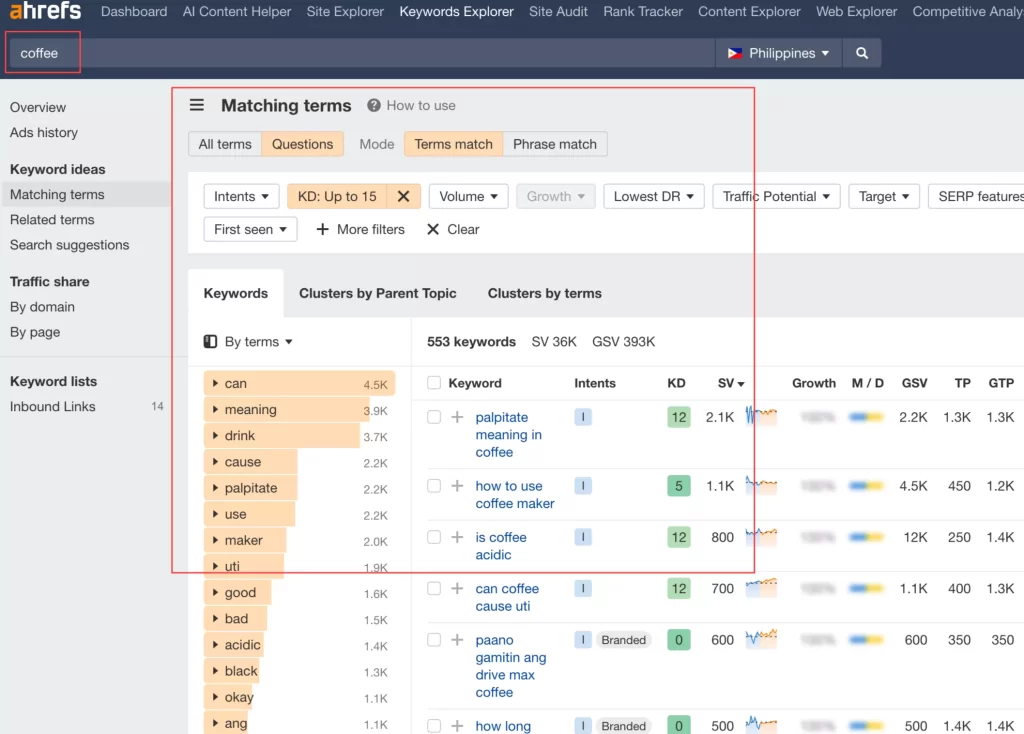
2. Find new long-tail keywords your pages can rank for.
Go to your top pages and see which content captures rankings for long-tail keywords sitting below page 1.
With a few optimizations, such as adding new sections to rank for these long-tail keywords, your content would likely increase its search traffic.
5. Publish More MOFU and TOFU Content
You don’t get sustainable rankings by expecting all product pages to rank for their commercial keywords.
One holistic content strategy is to publish informational content for keywords that lead people to their purchasing decisions.
With 15% of total searchers being new, content publishing offers an ocean of opportunities.
Start creating content to tackle comparative keywords such as “vs” or “best” phrases, which often have low competition but high traffic opportunities.
For instance, creating a blog post titled "Best Winter Jackets vs. Coats: What’s Right for You?" targets users seeking guidance while naturally incorporating relevant keywords.
Build content that answers common user questions, showcases expertise, and drives product or service page traffic. Linking these posts to collection and product pages strengthens the structure of your website and distributes link equity across pages.
Whenever you publish new content, ensure it links to related existing pages. This helps users navigate your site and signals search engines about the relationships between pages.
6. Collaborate with Active Authors
One overlooked strategy in content publishing and link building is expert collaboration.
Creating helpful content that satisfies users with new information takes a lot of work on the back end (research) and front-end publishing (editing). By getting new insights from other authors who are also practitioners in their industries, you solidify the credibility of your content piece, which increases its acceptance by your target readers.
If you don’t have any authors in mind, start reaching out to them by first populating a list of active authors in your space. You can use Ahrefs to find these active authors.

Another way is to publish “accepting guest post” or “become a contributor” pages to attract publishers to contact you for collaboration.
Obviously, not everyone is a good candidate, but getting one or two who surely know what they’re talking about is worthwhile for a content collaboration.
Fire Bullets, Then Cannonballs
SEO, in offense, must be a combination of firing bullets and cannonballs. While aiming for greater impact with high-intensive efforts, you are shooting for results with bullets—low-hanging fruits SEO. This enables you to build a solid momentum of an SEO campaign.
While everyone waits for significant results from their high-intensity work, you get consistent, quick wins with your bullets. There are small things that you can add to your SEO arsenal, giving you a head-start advantage in your competition.
